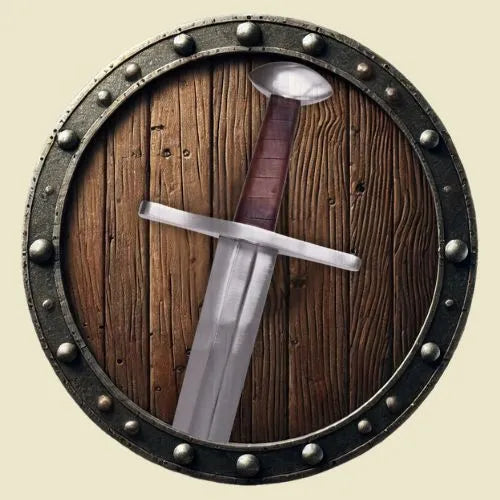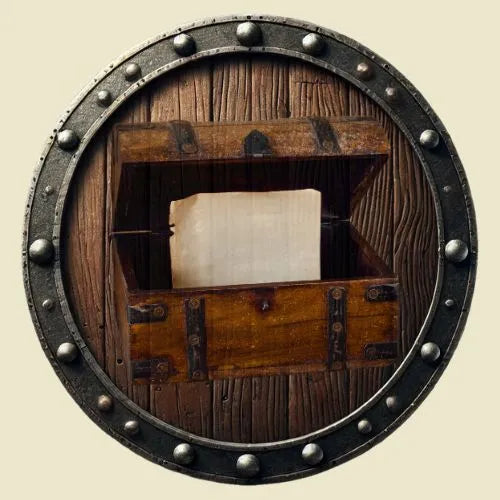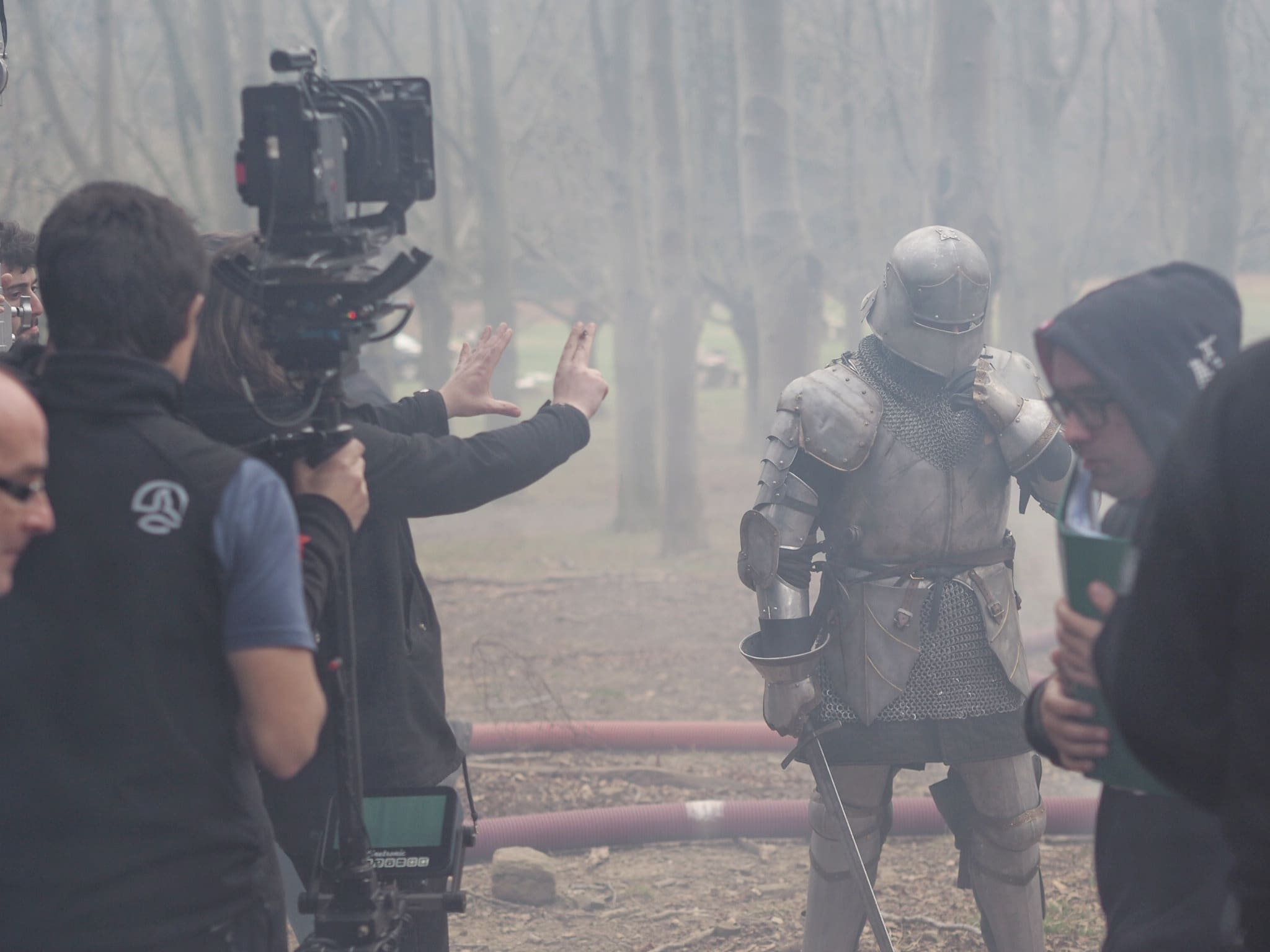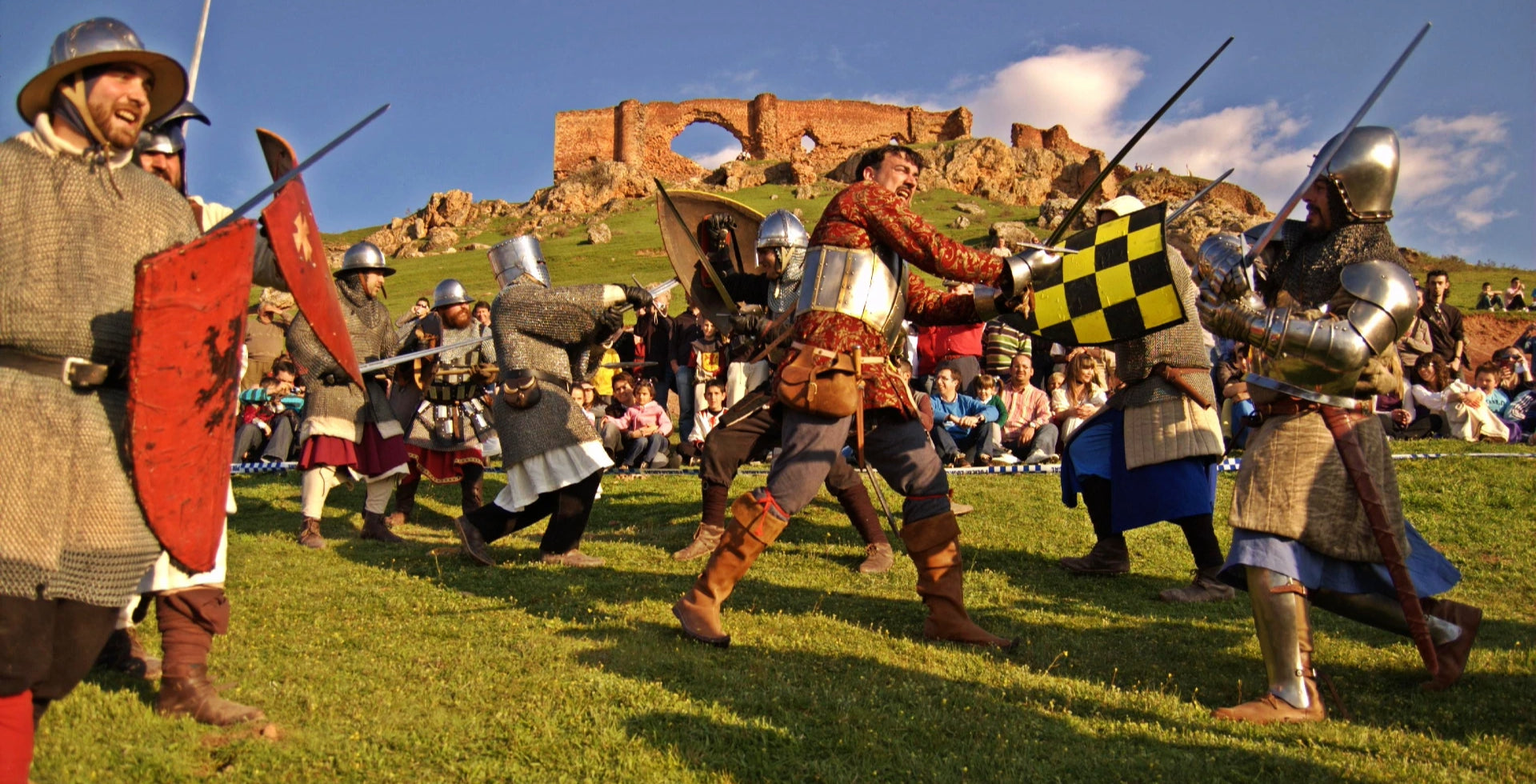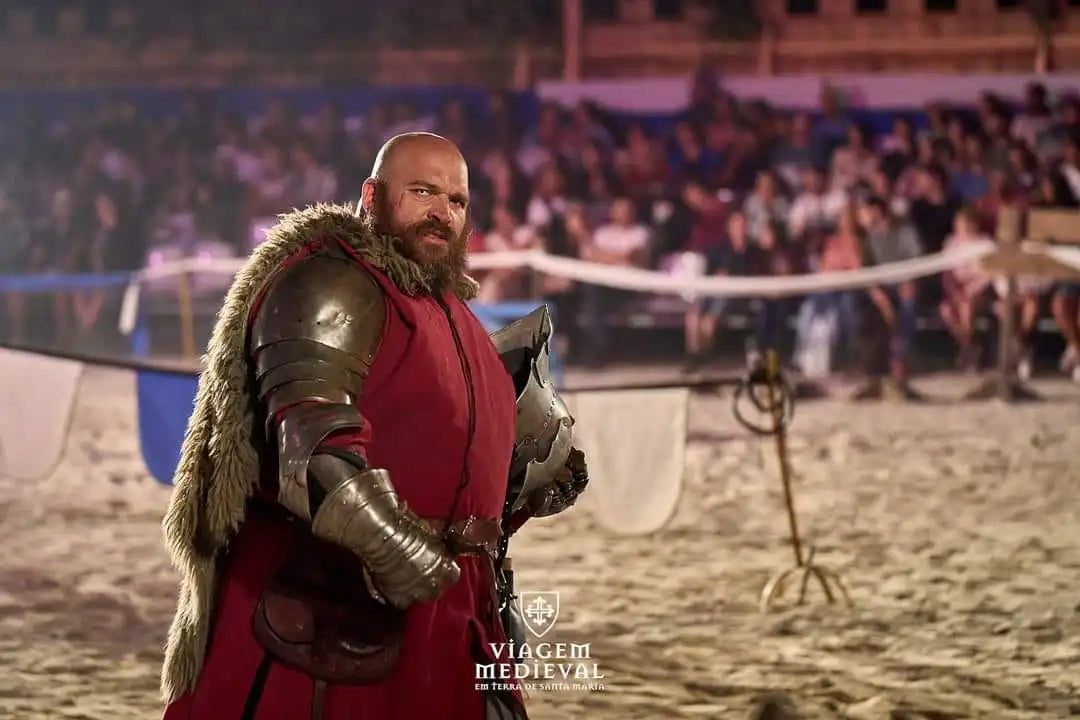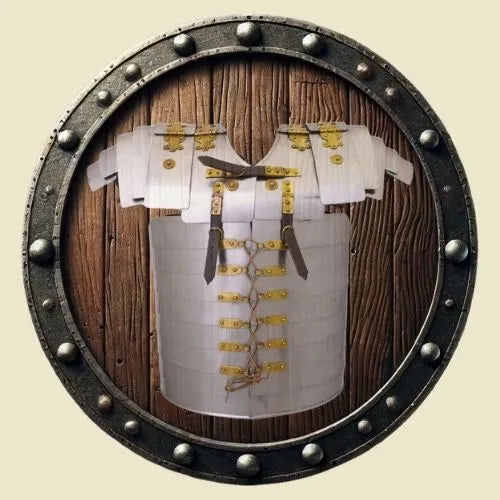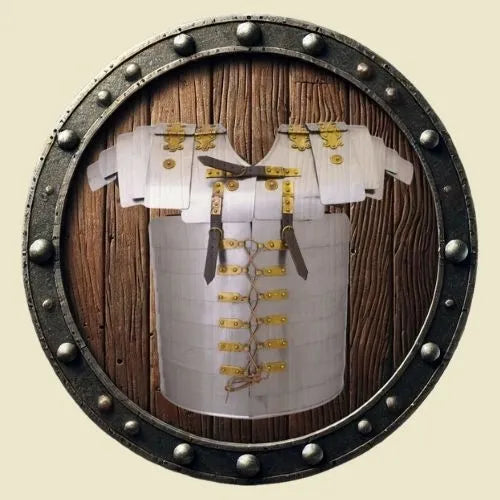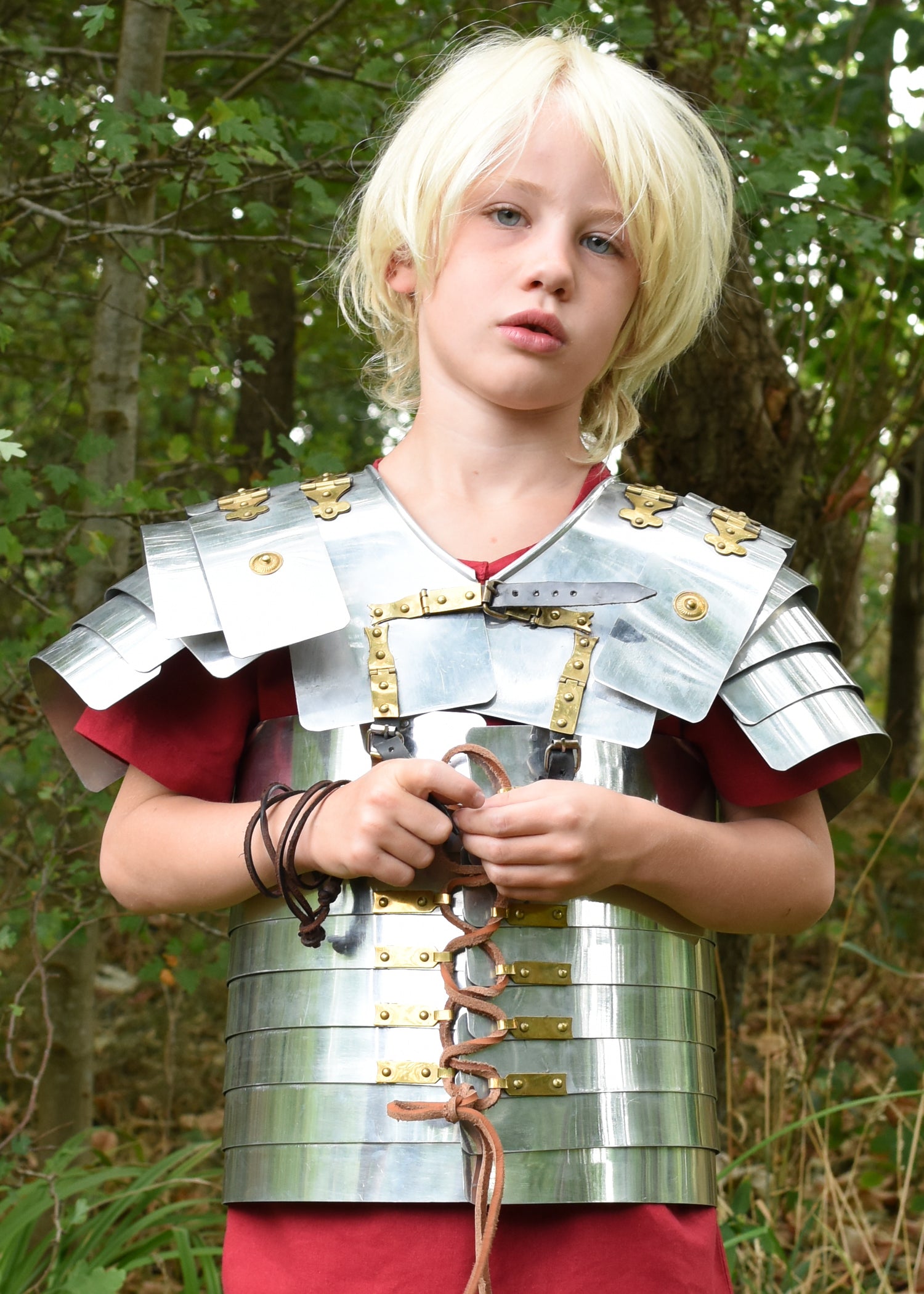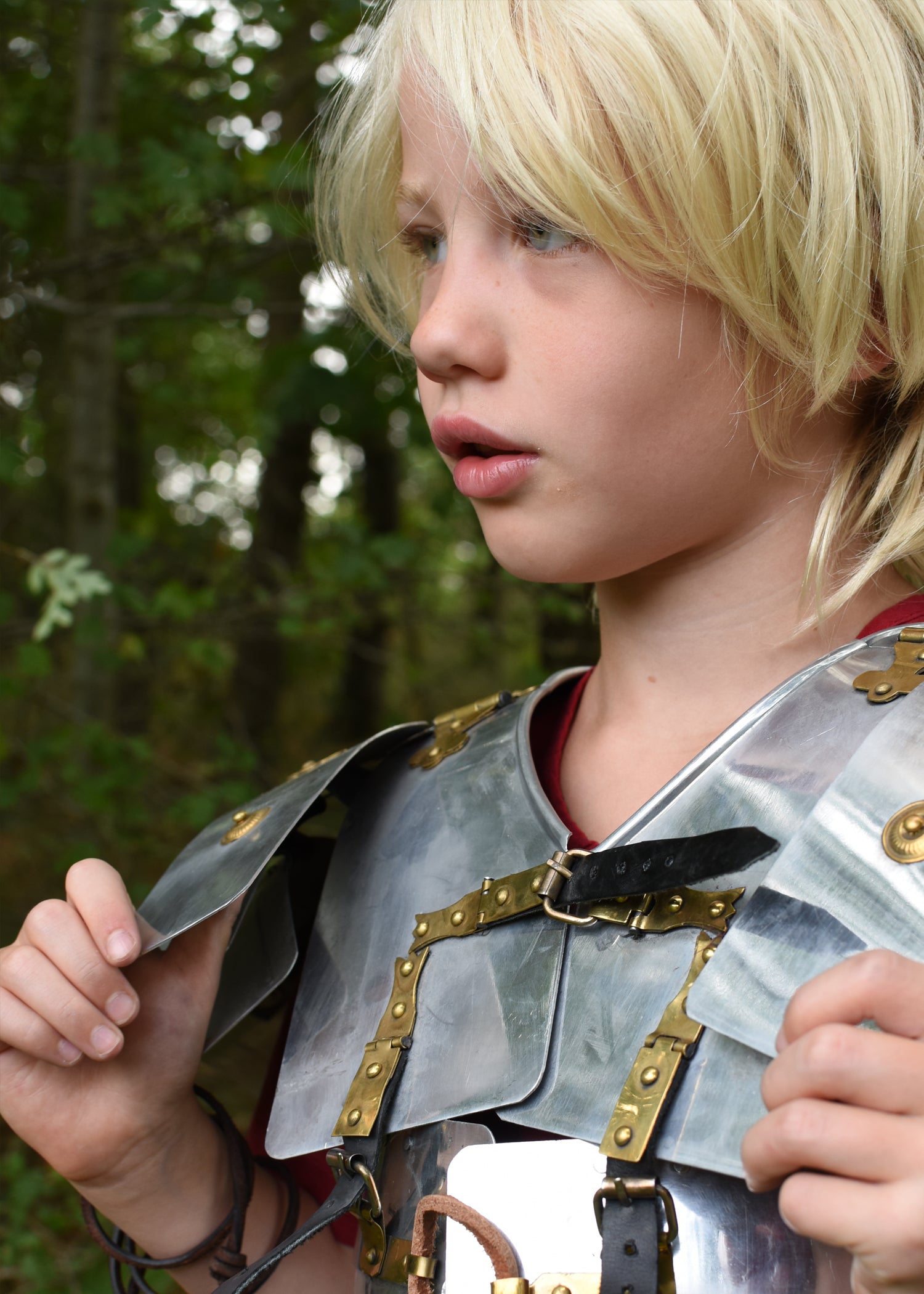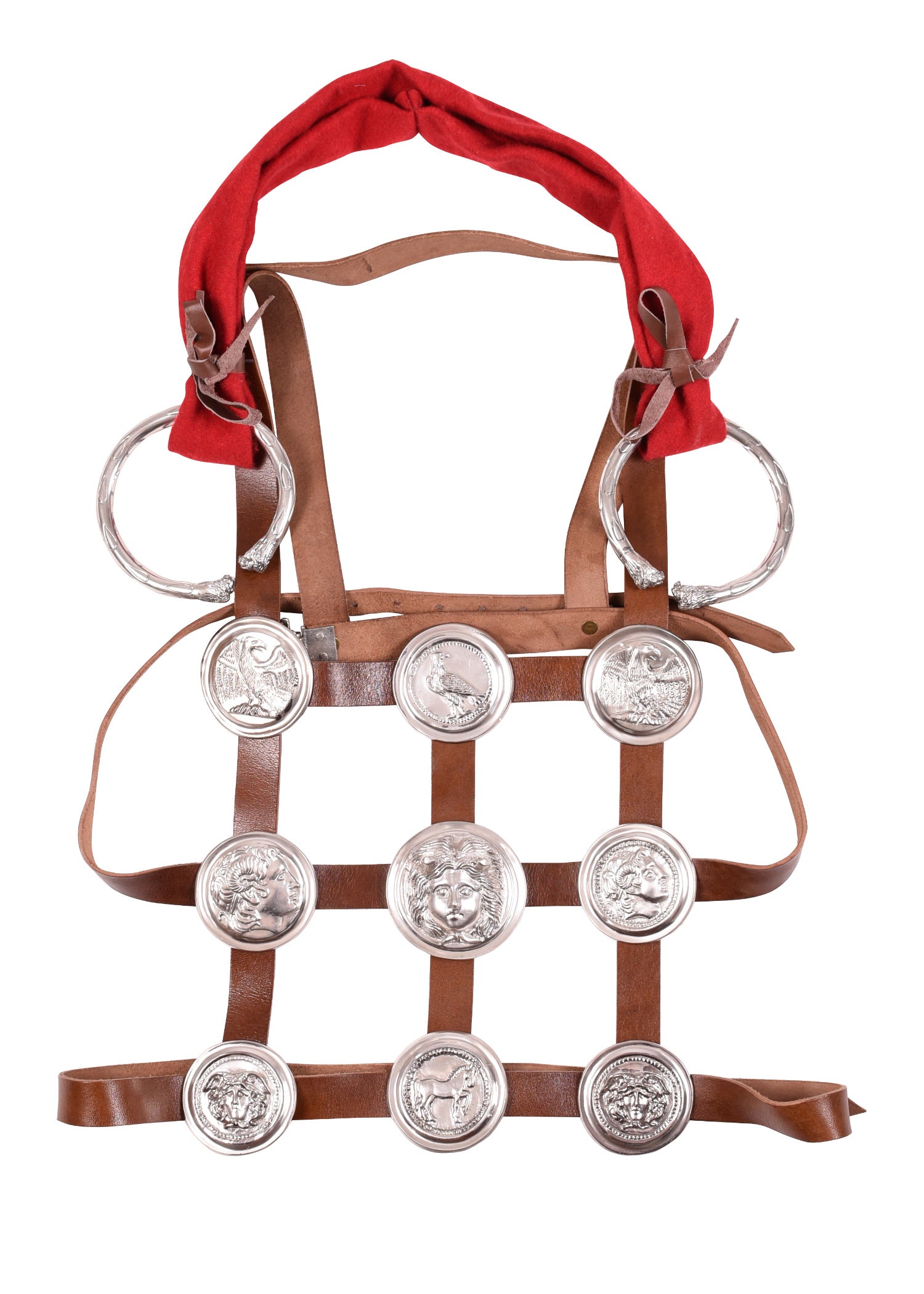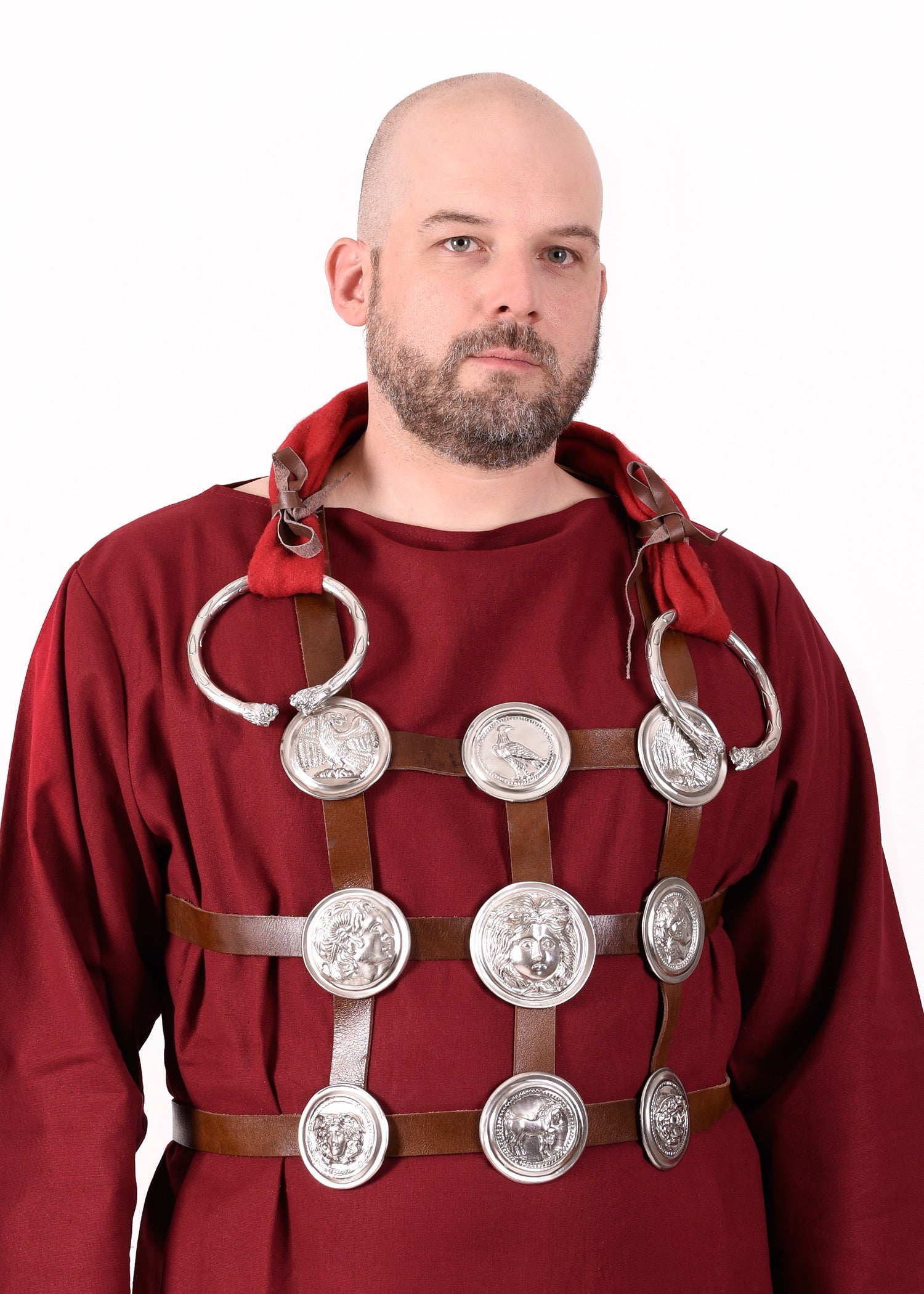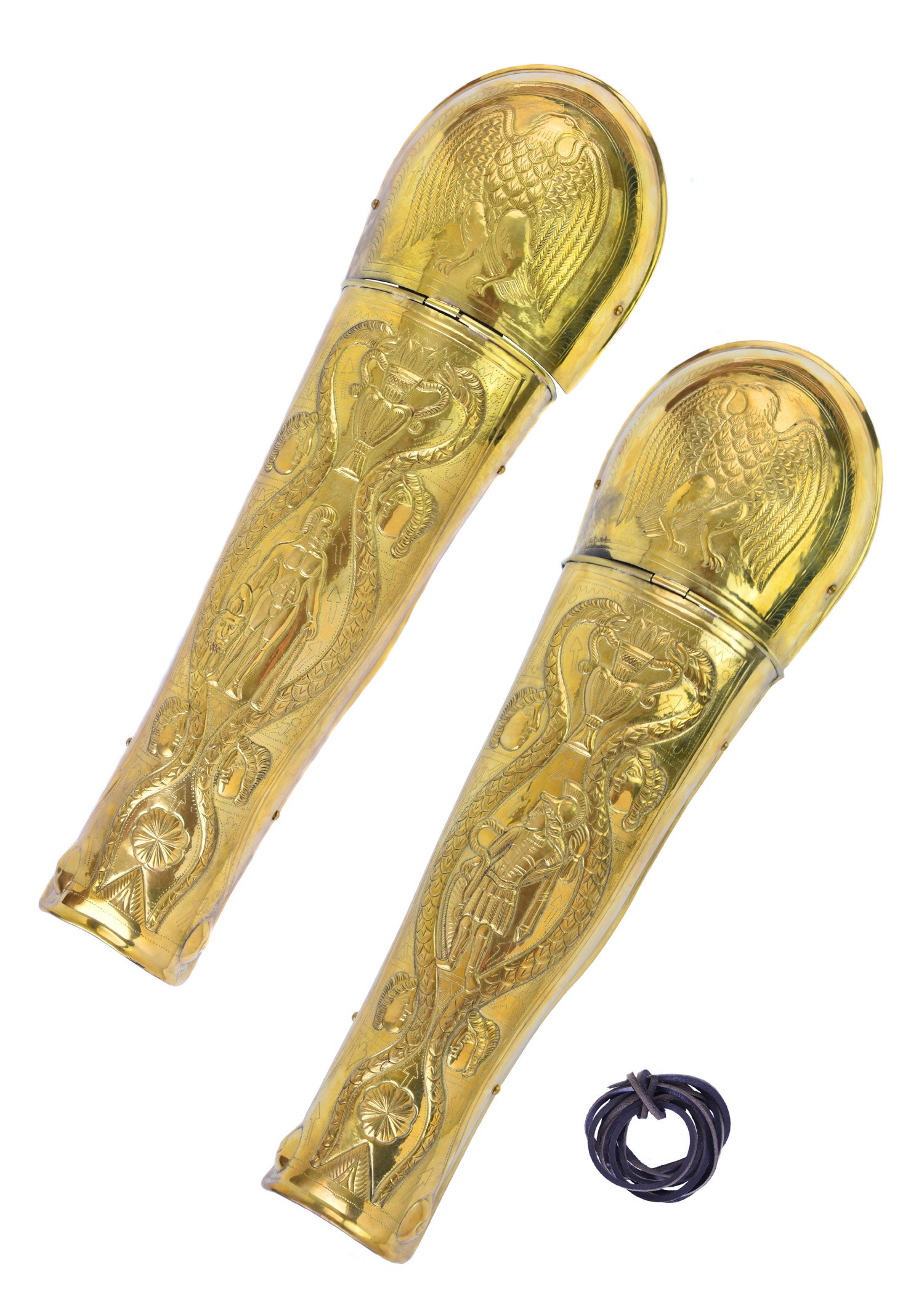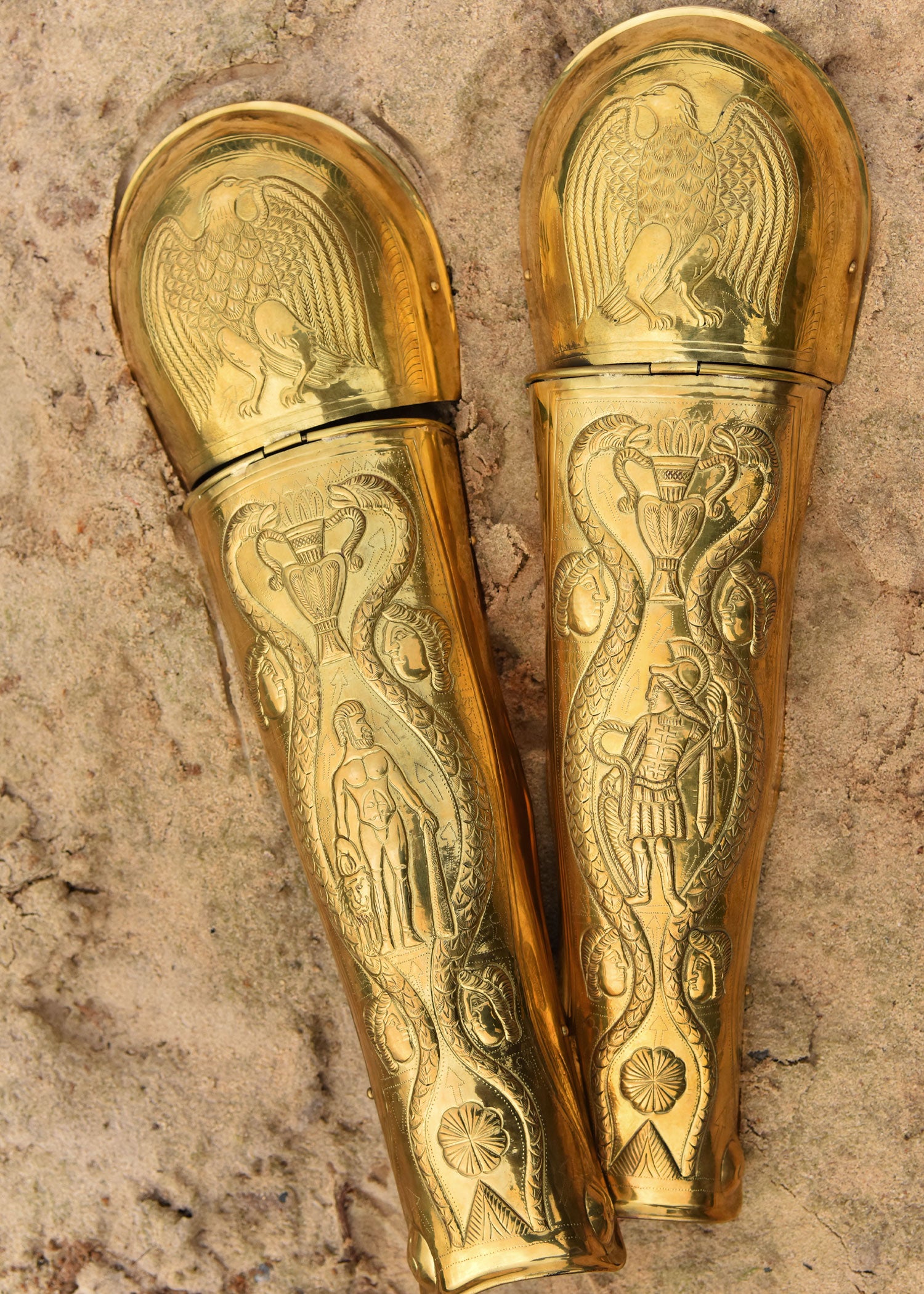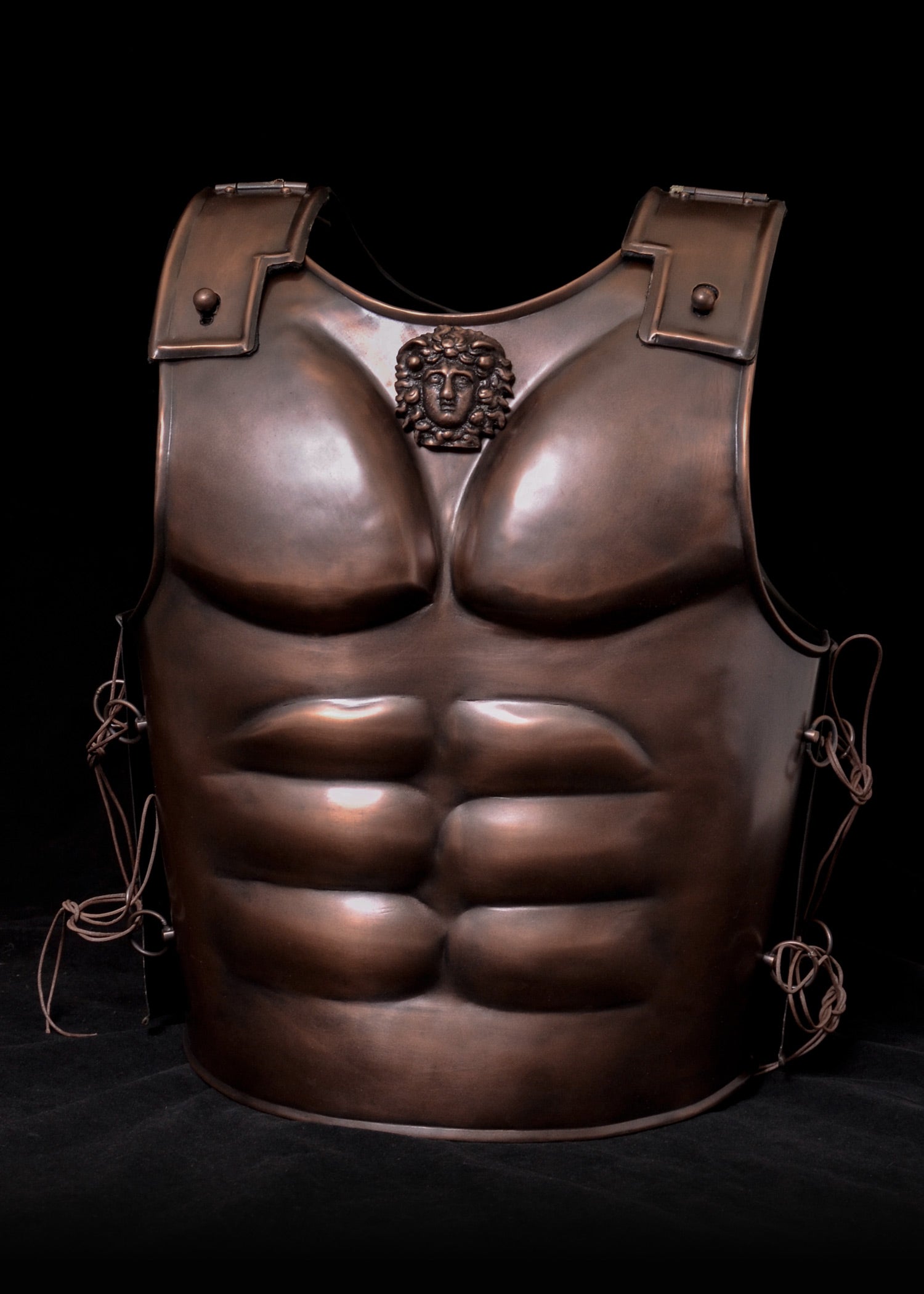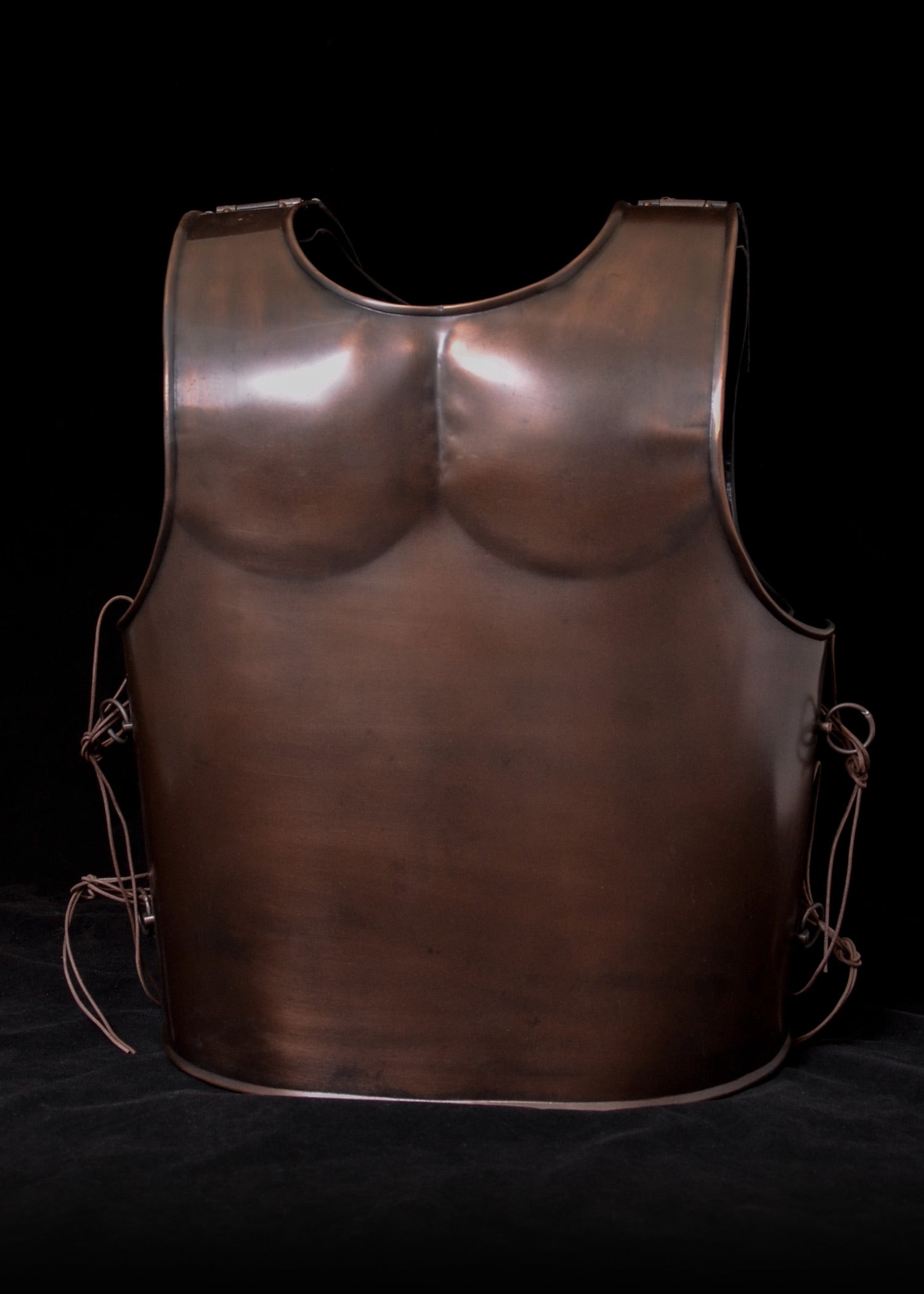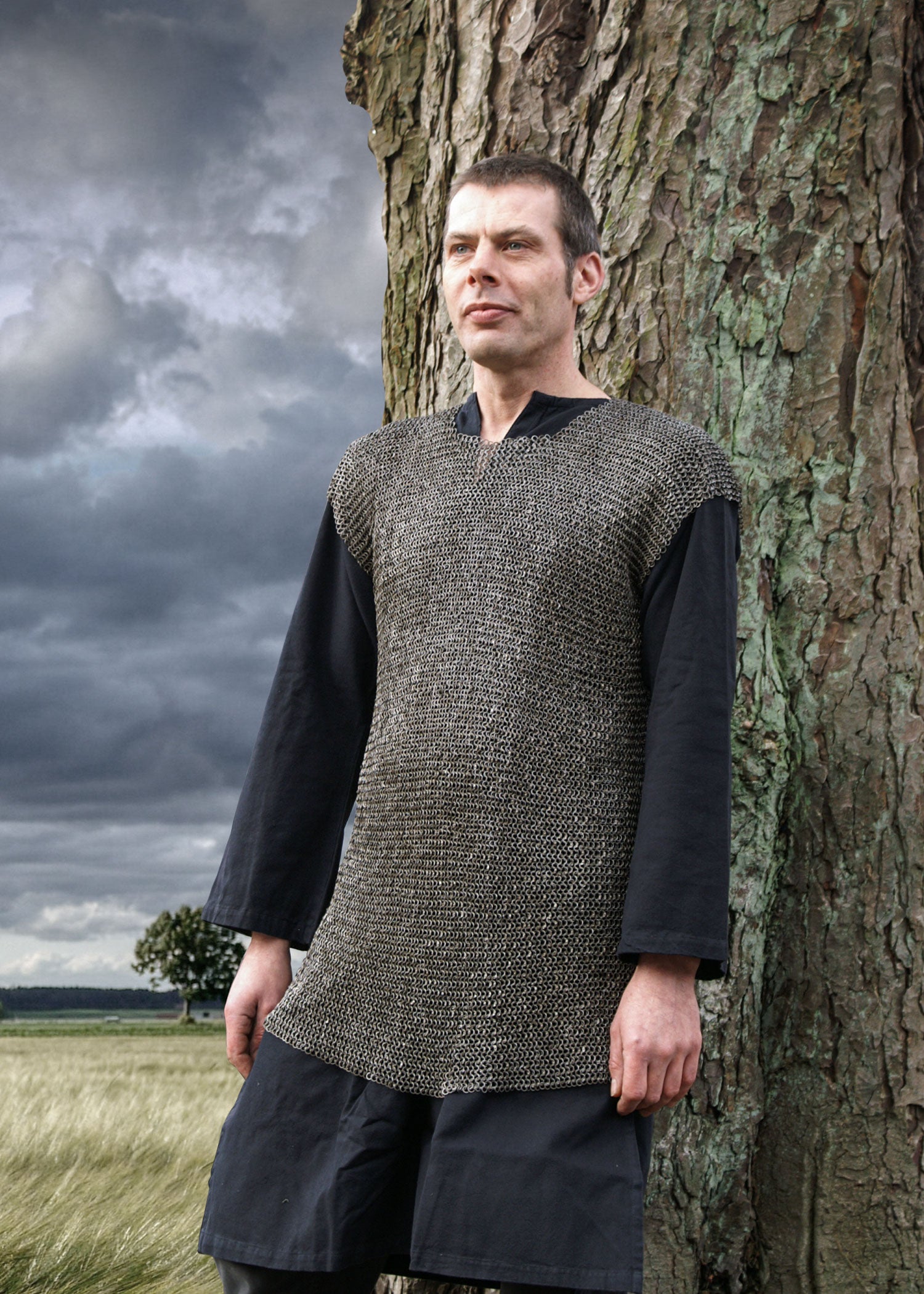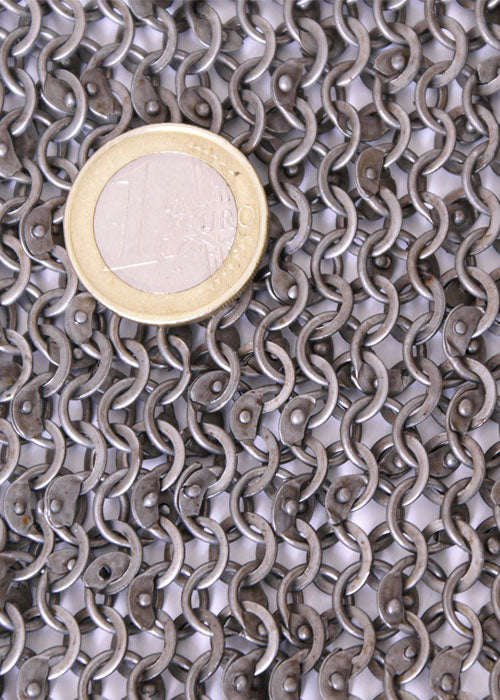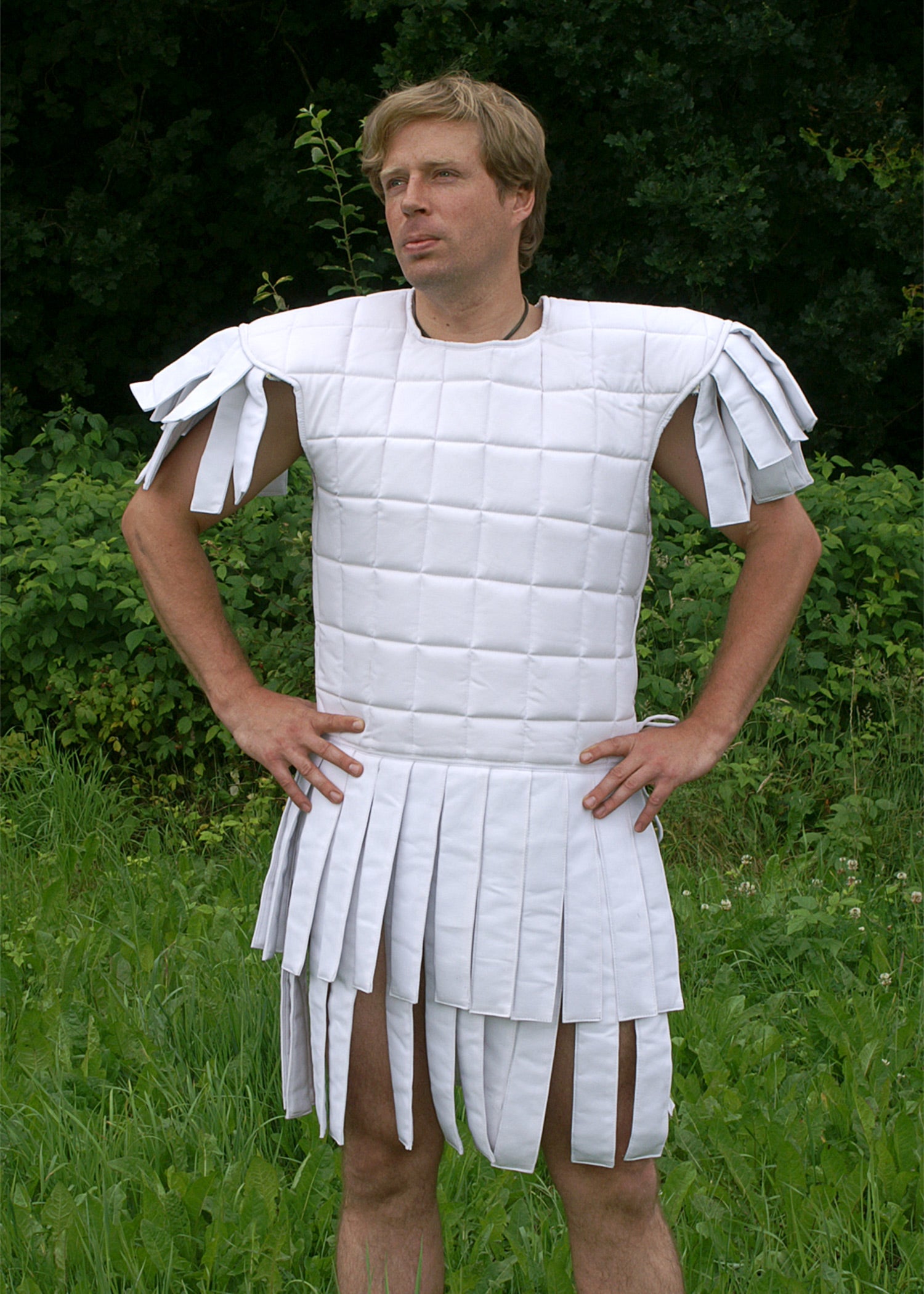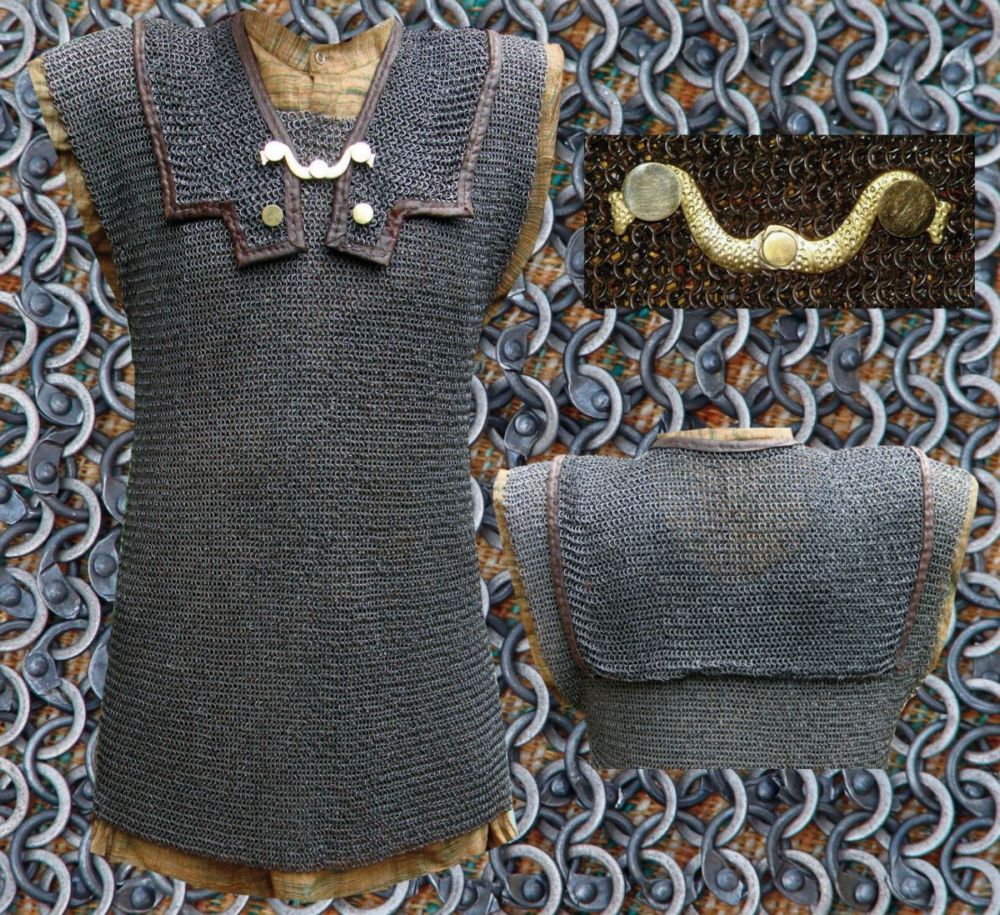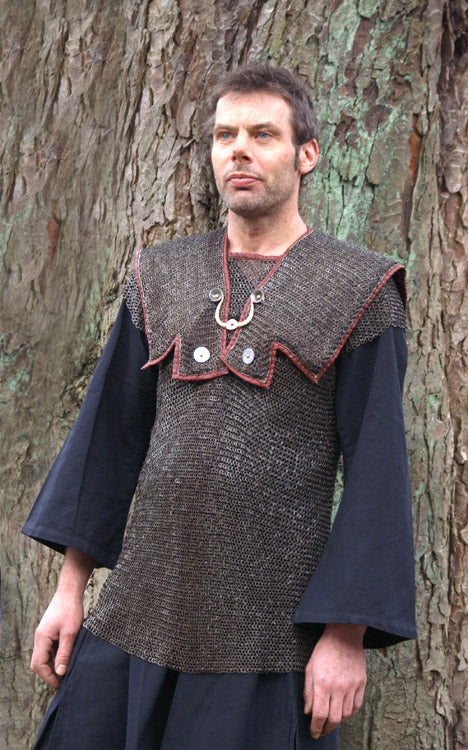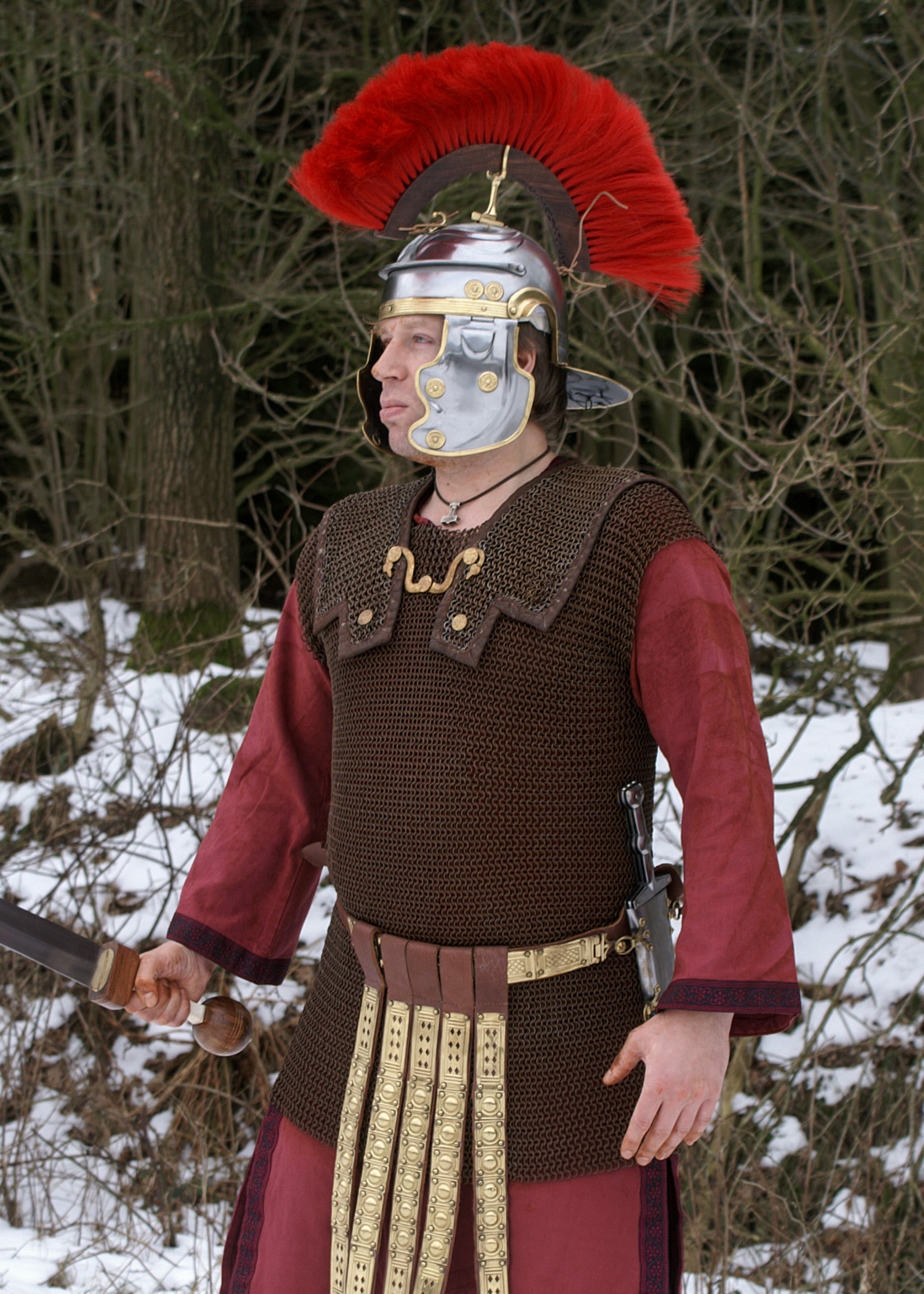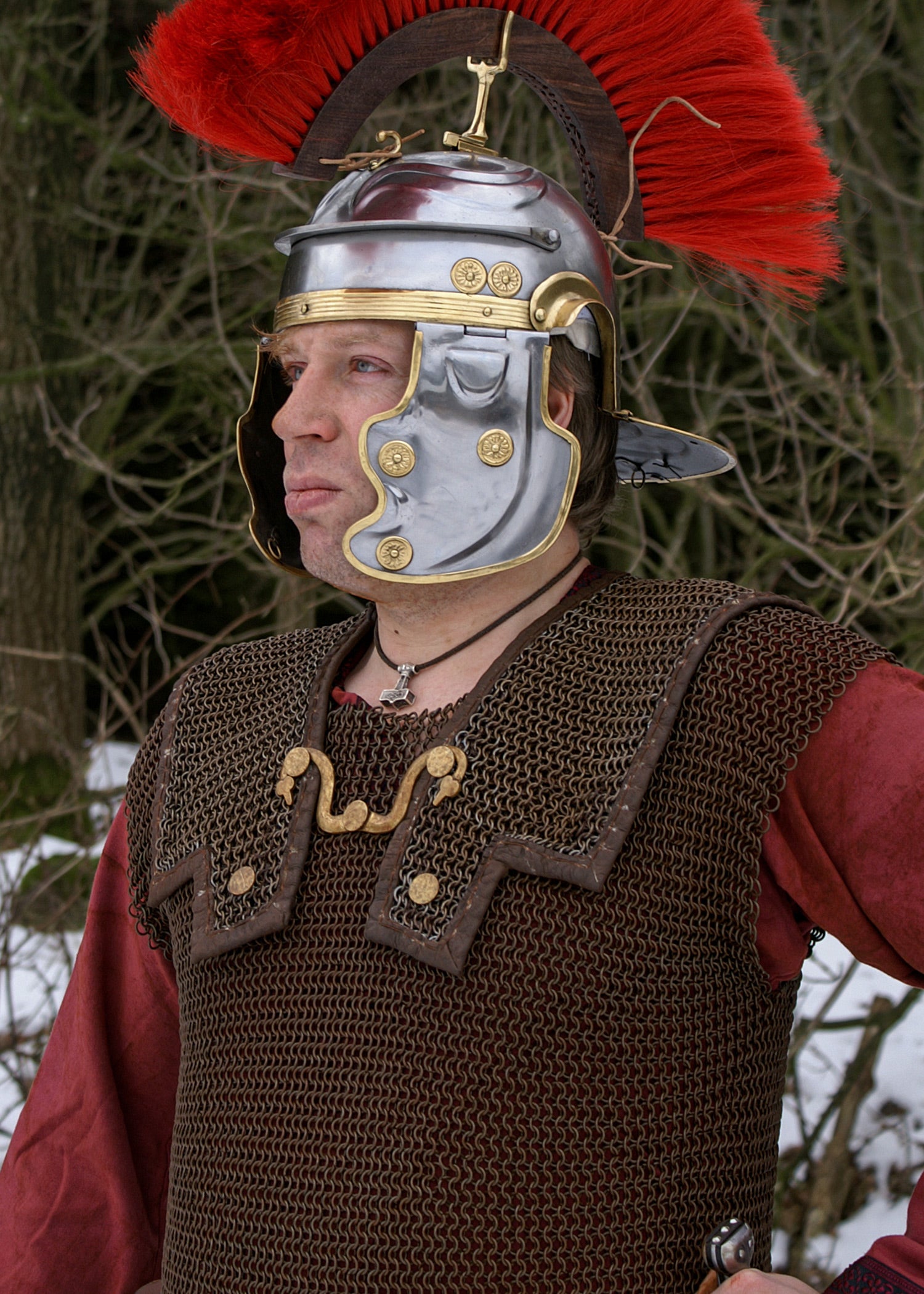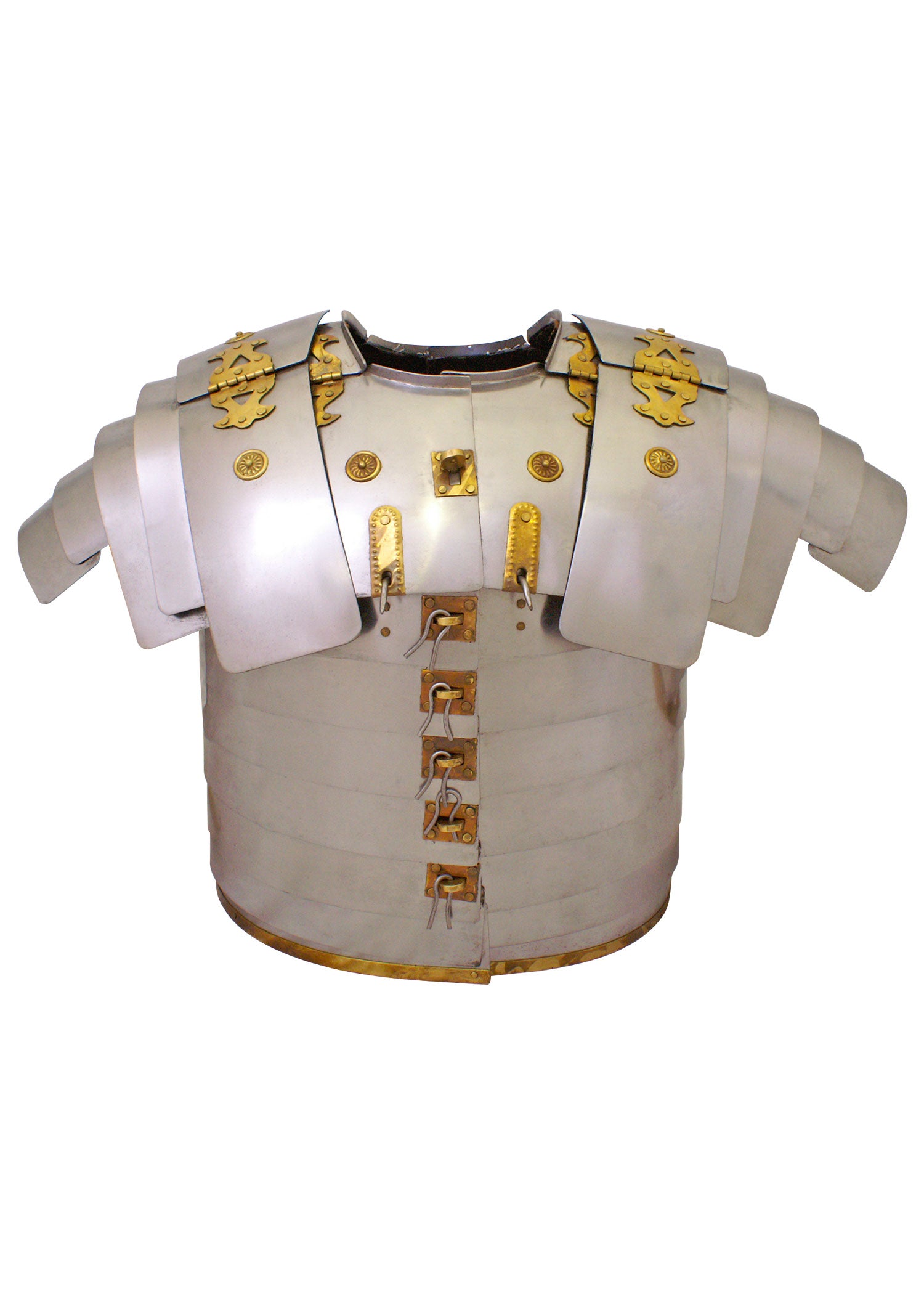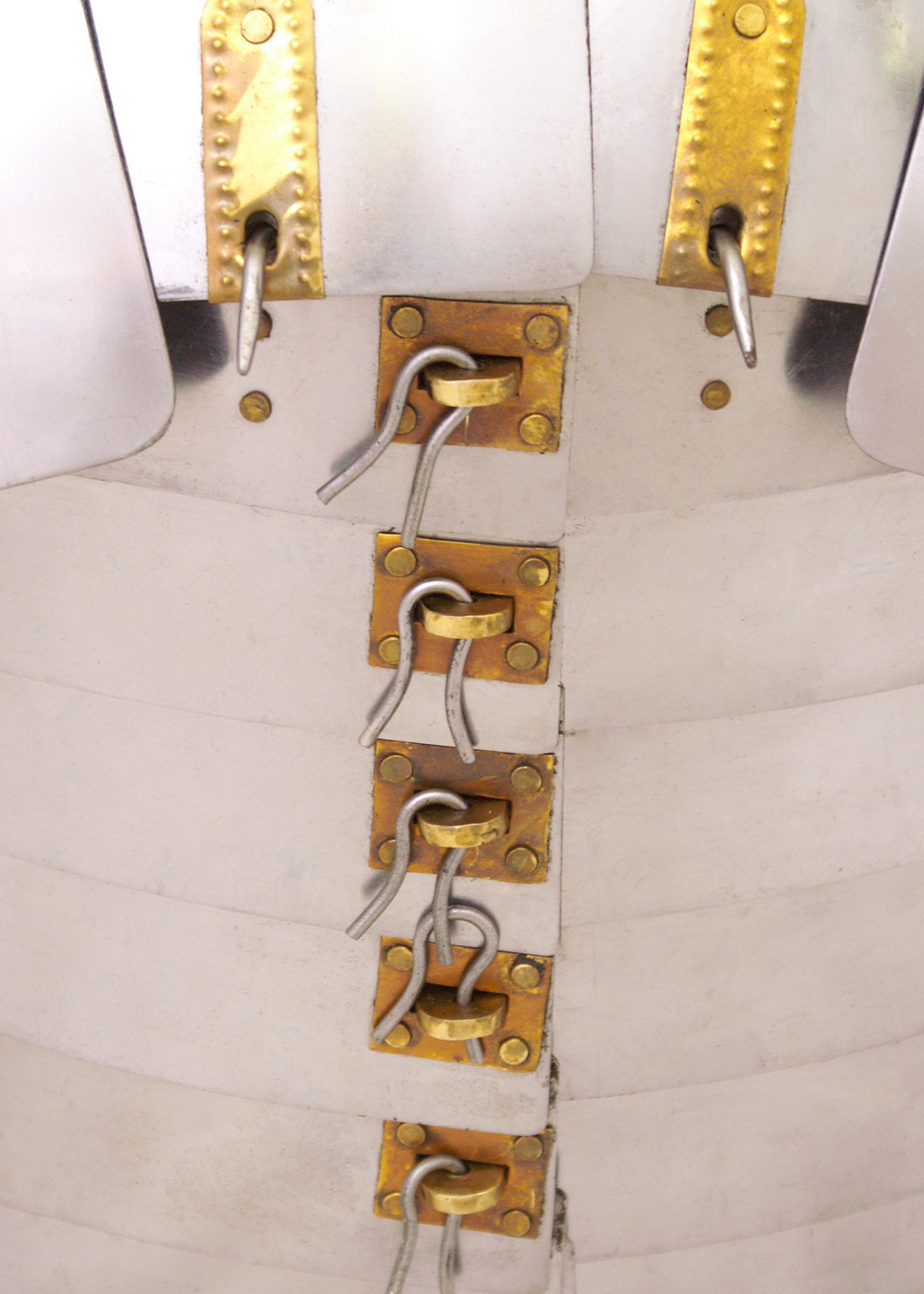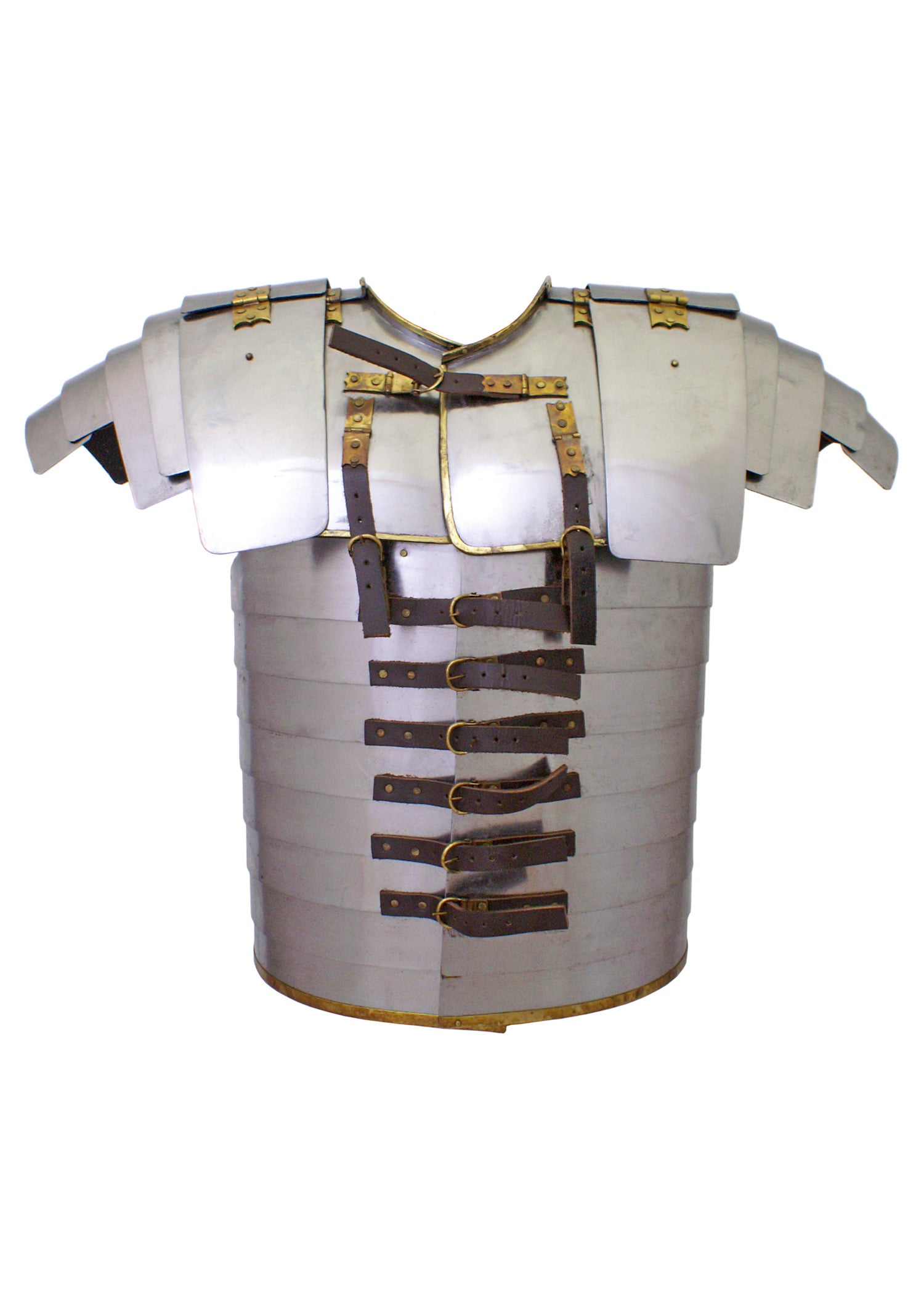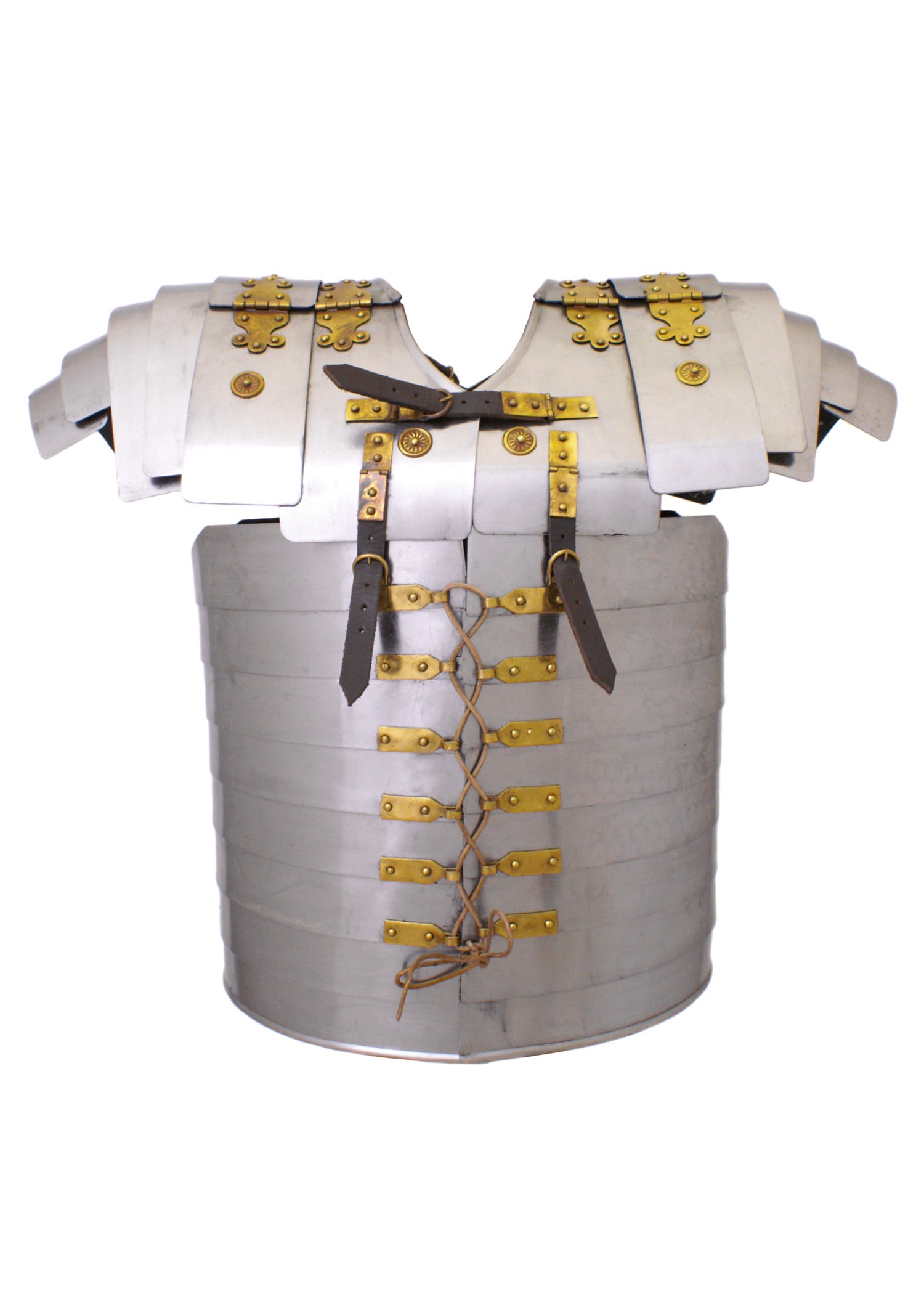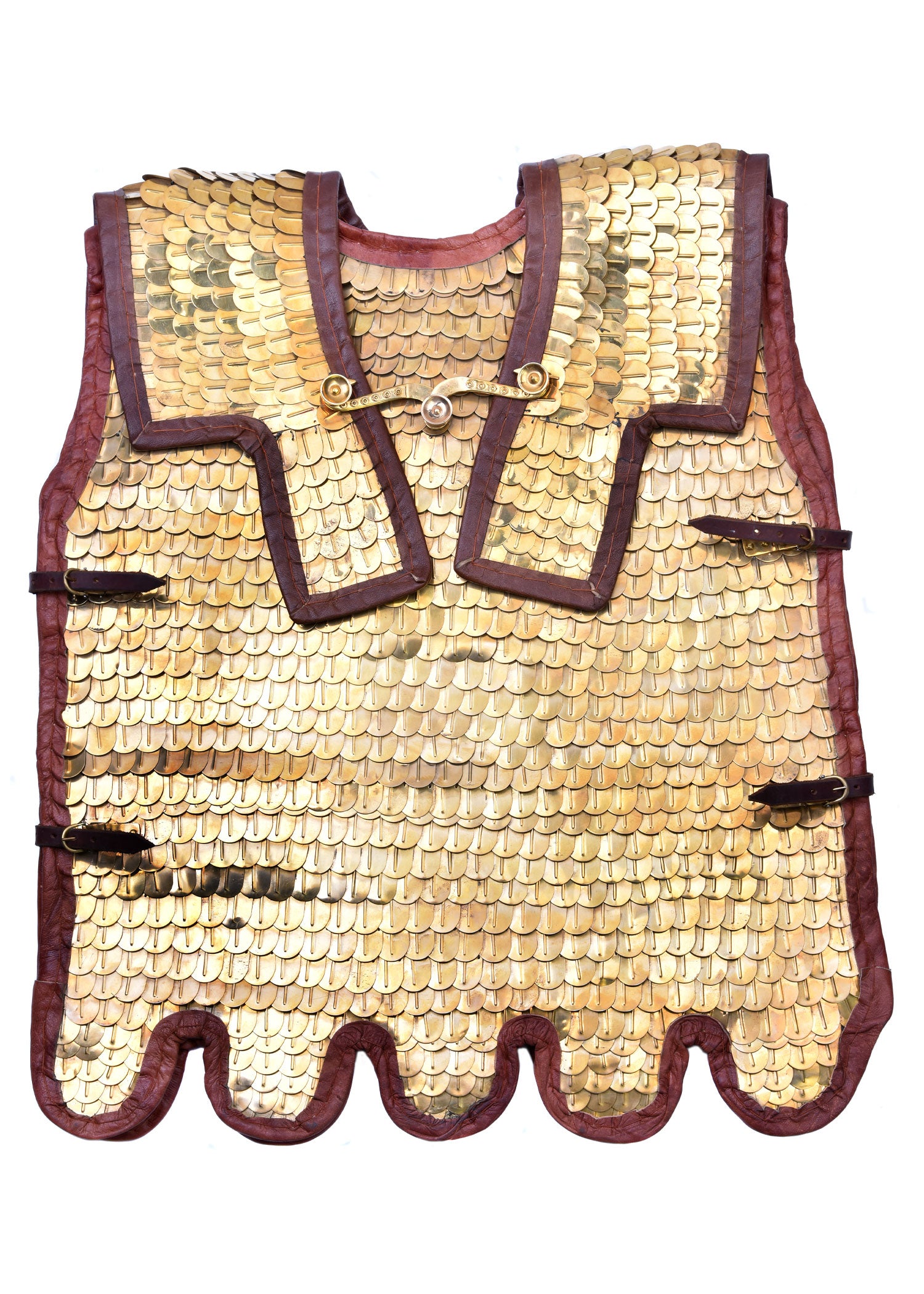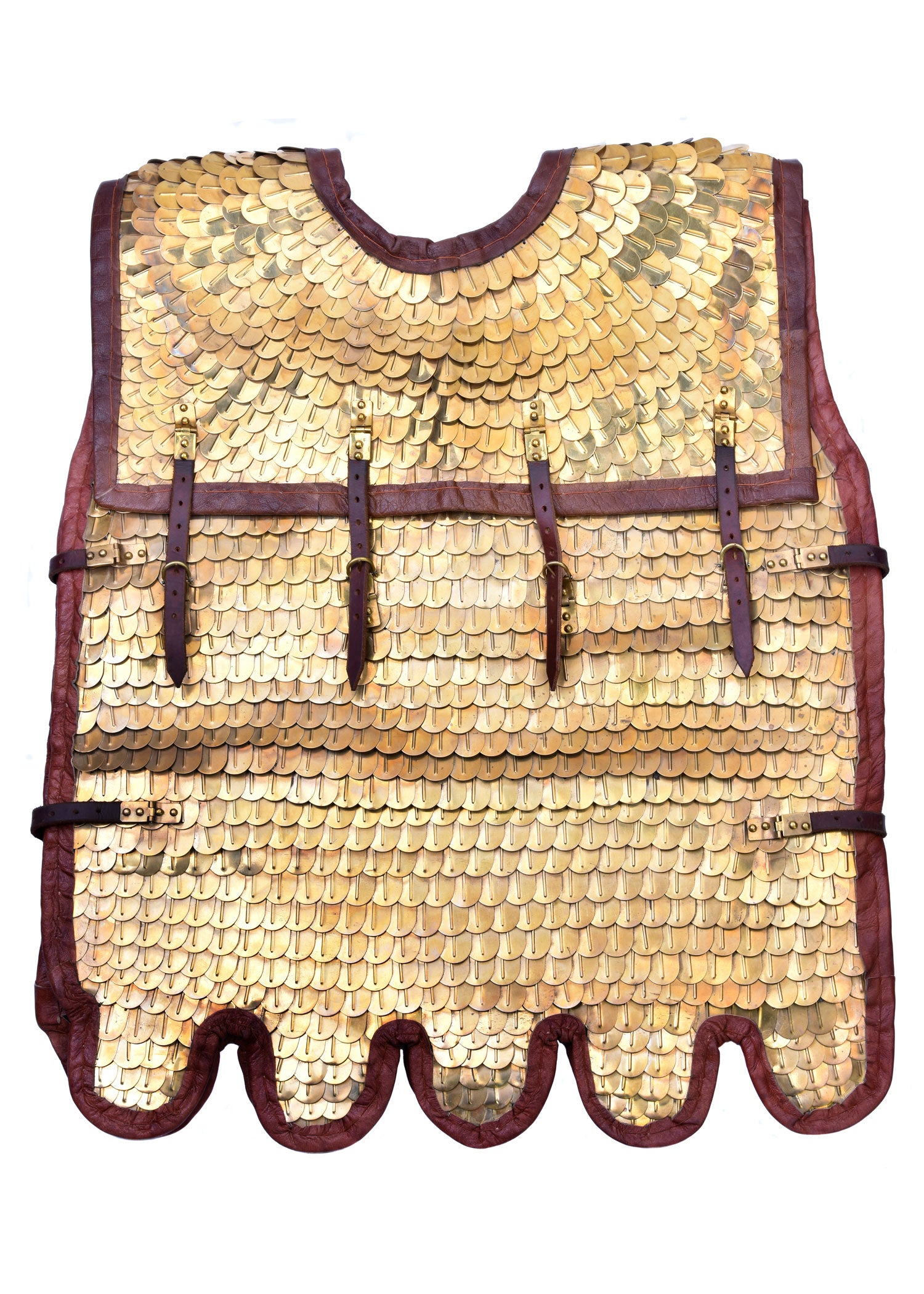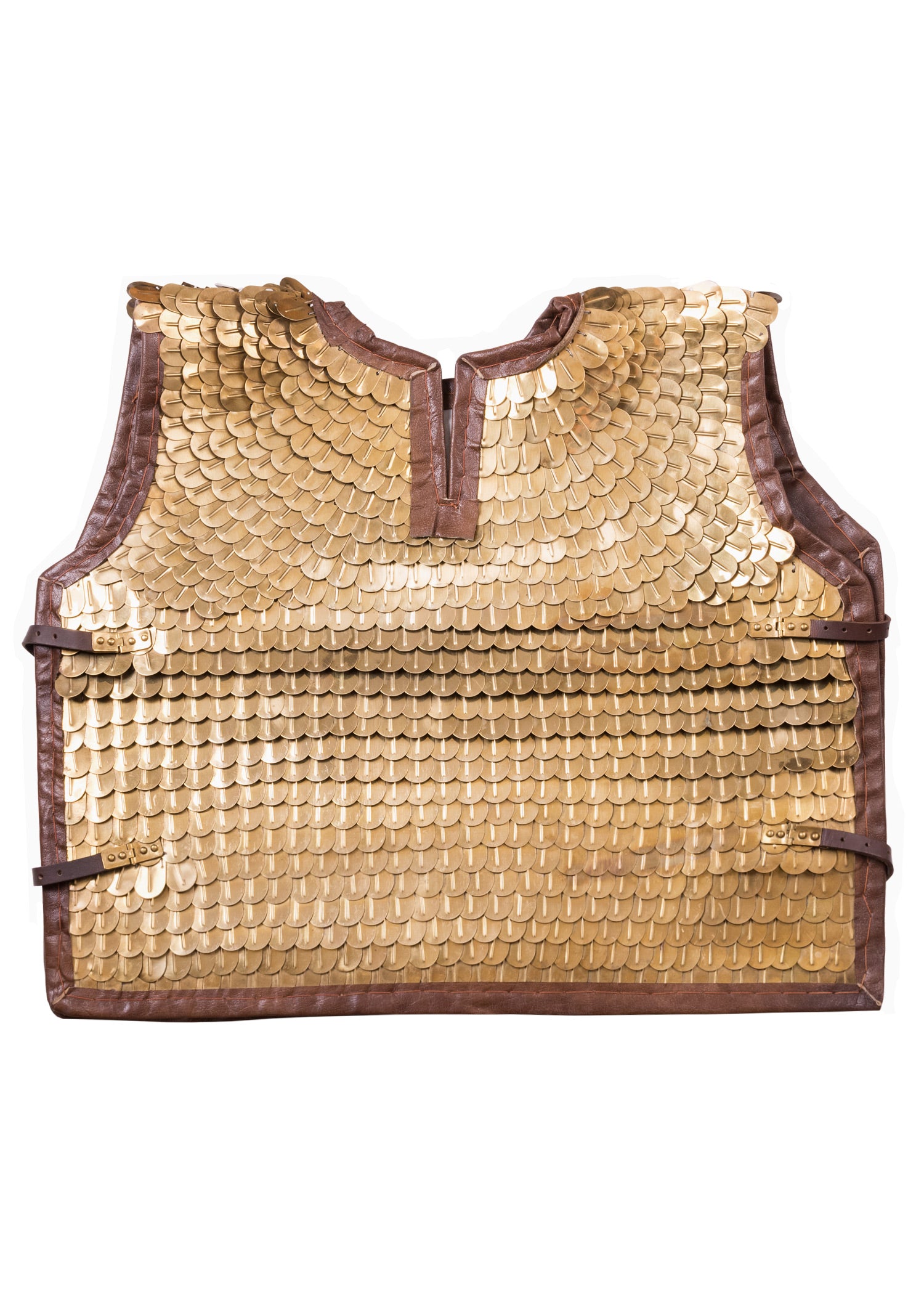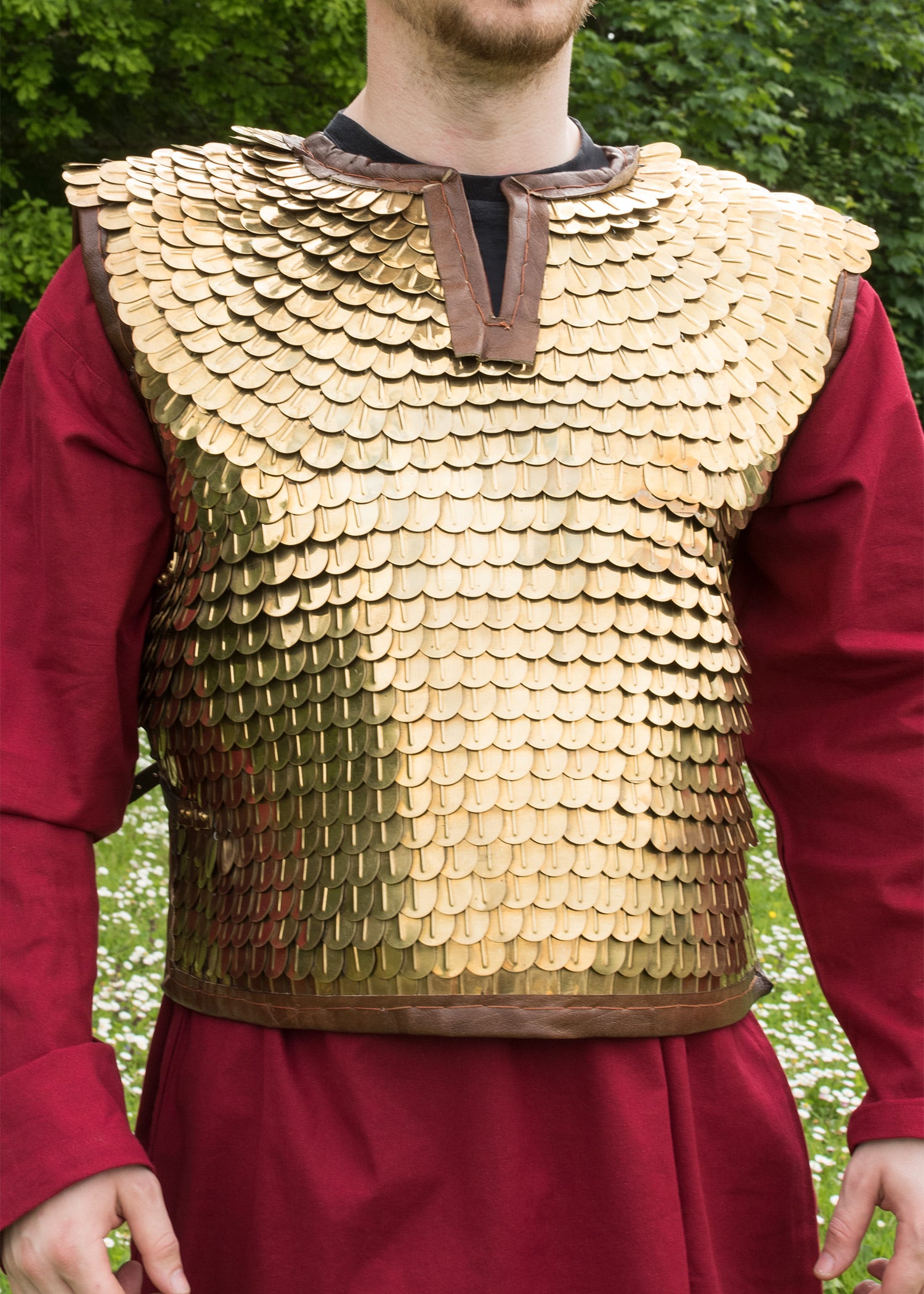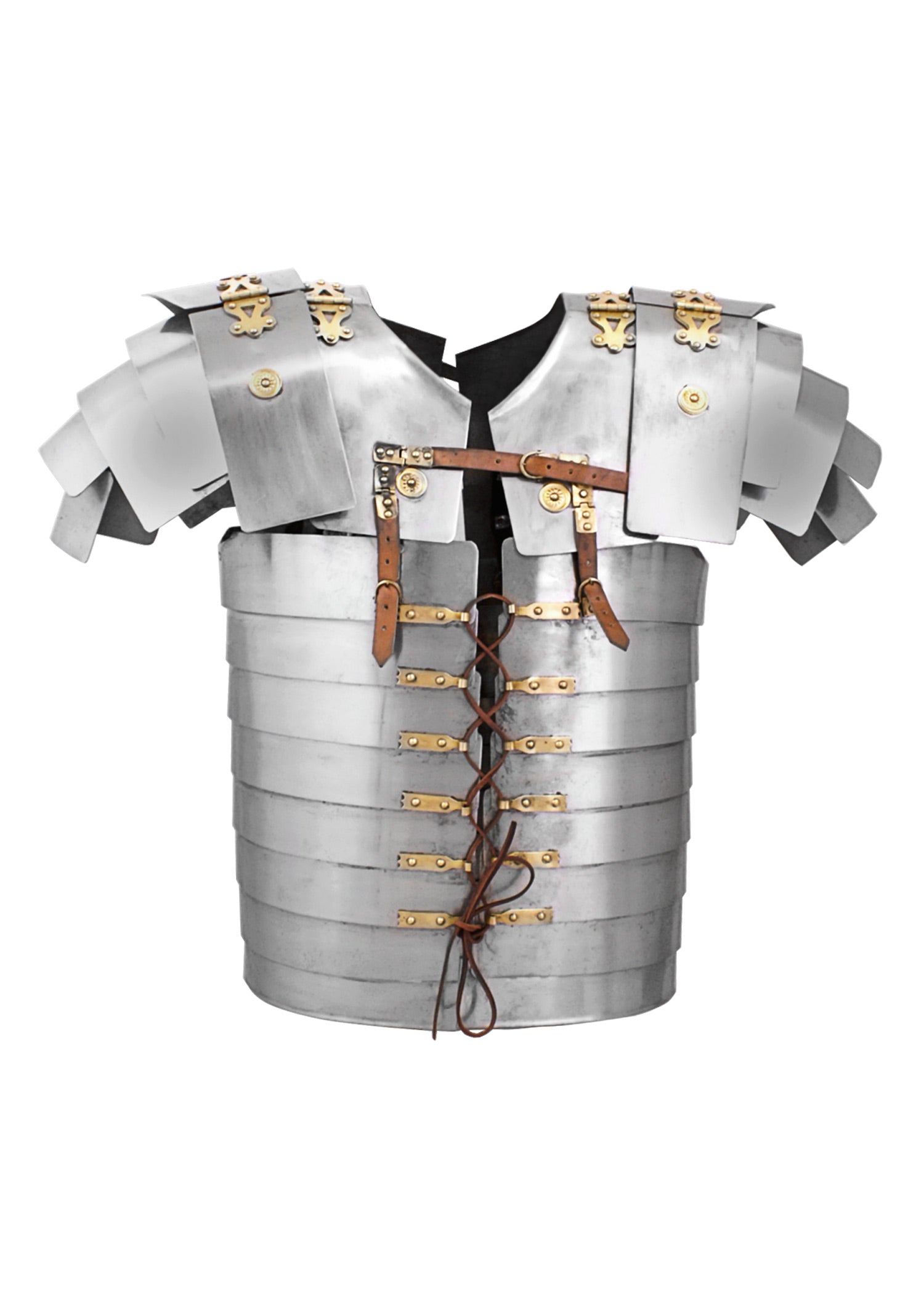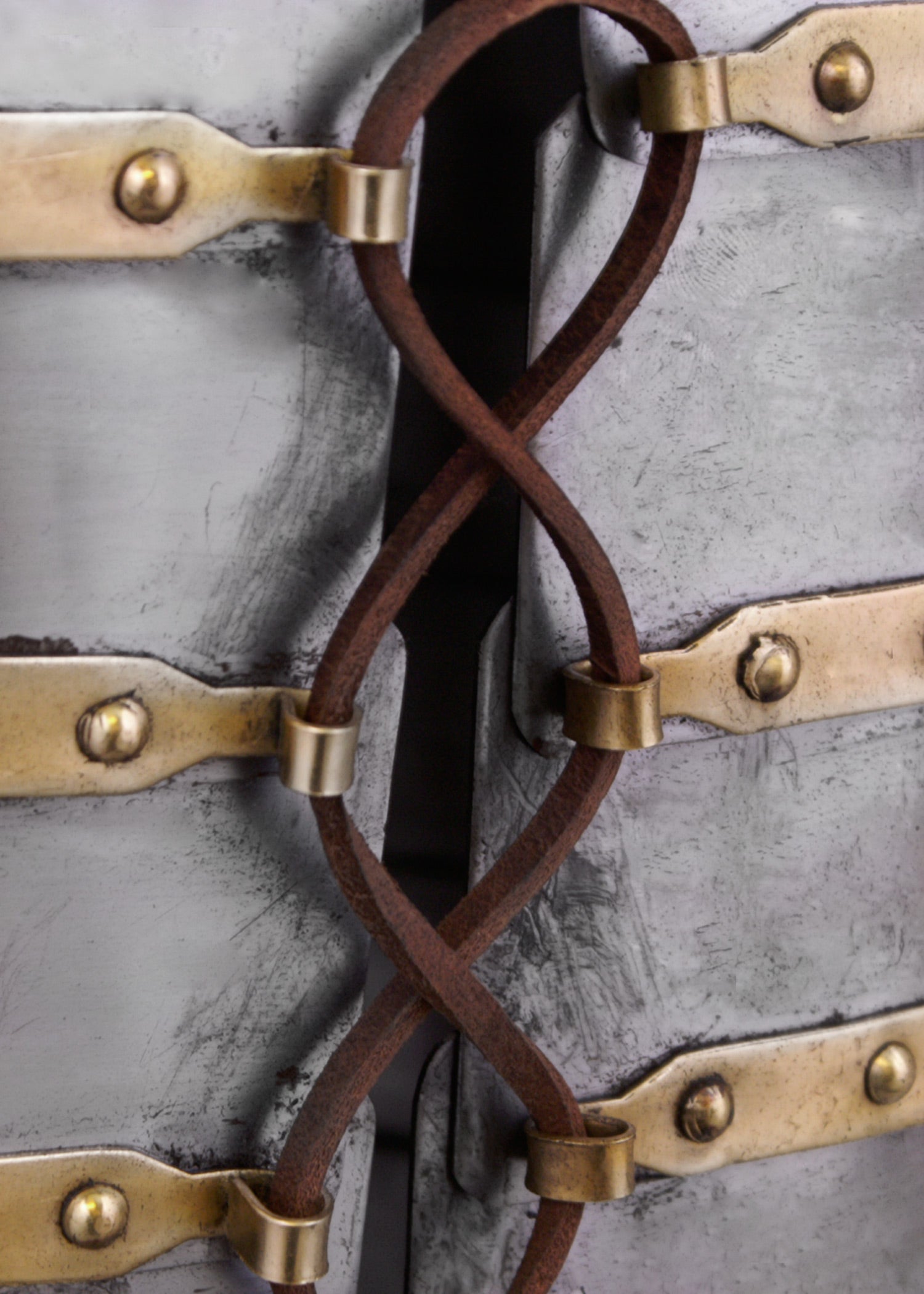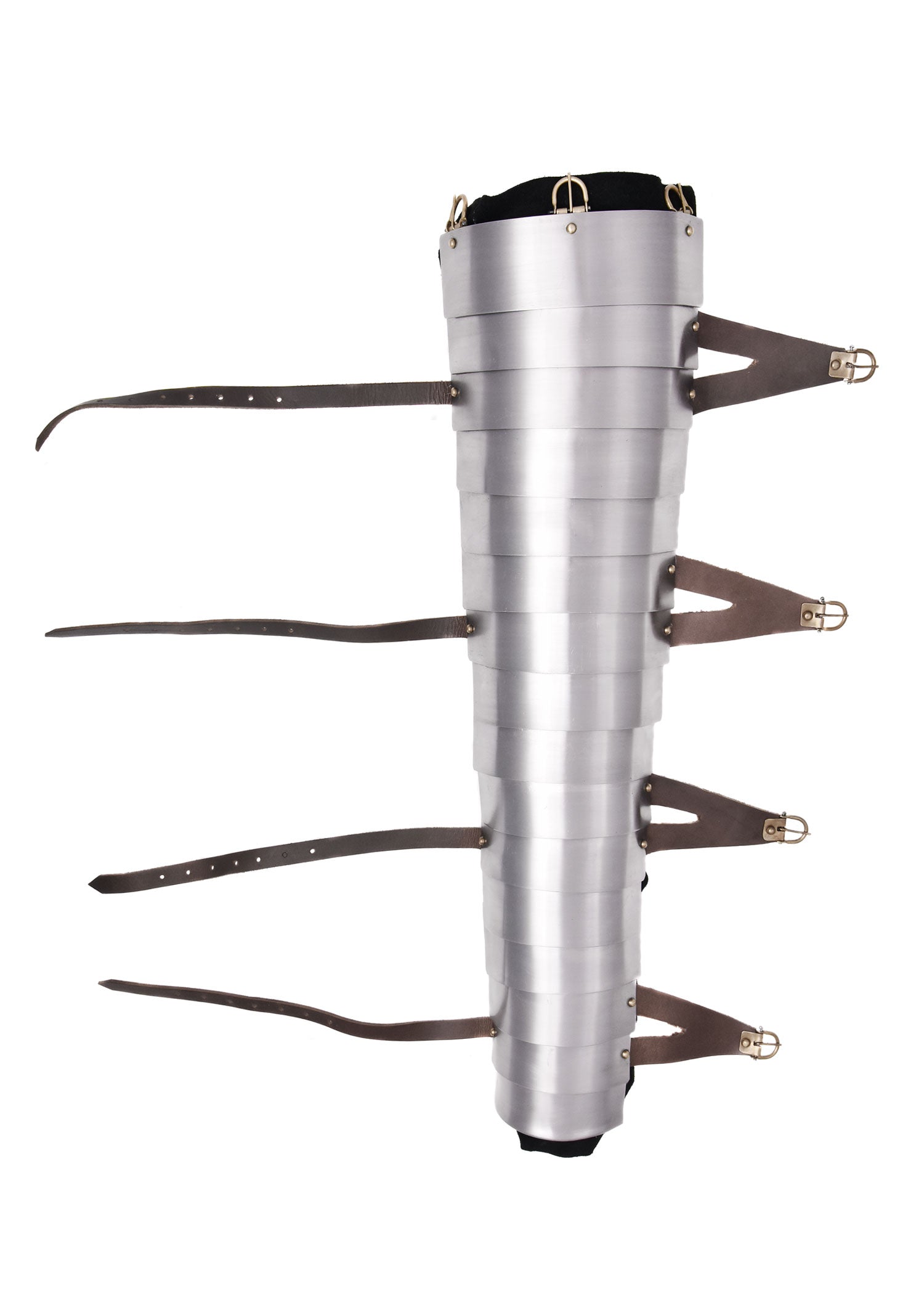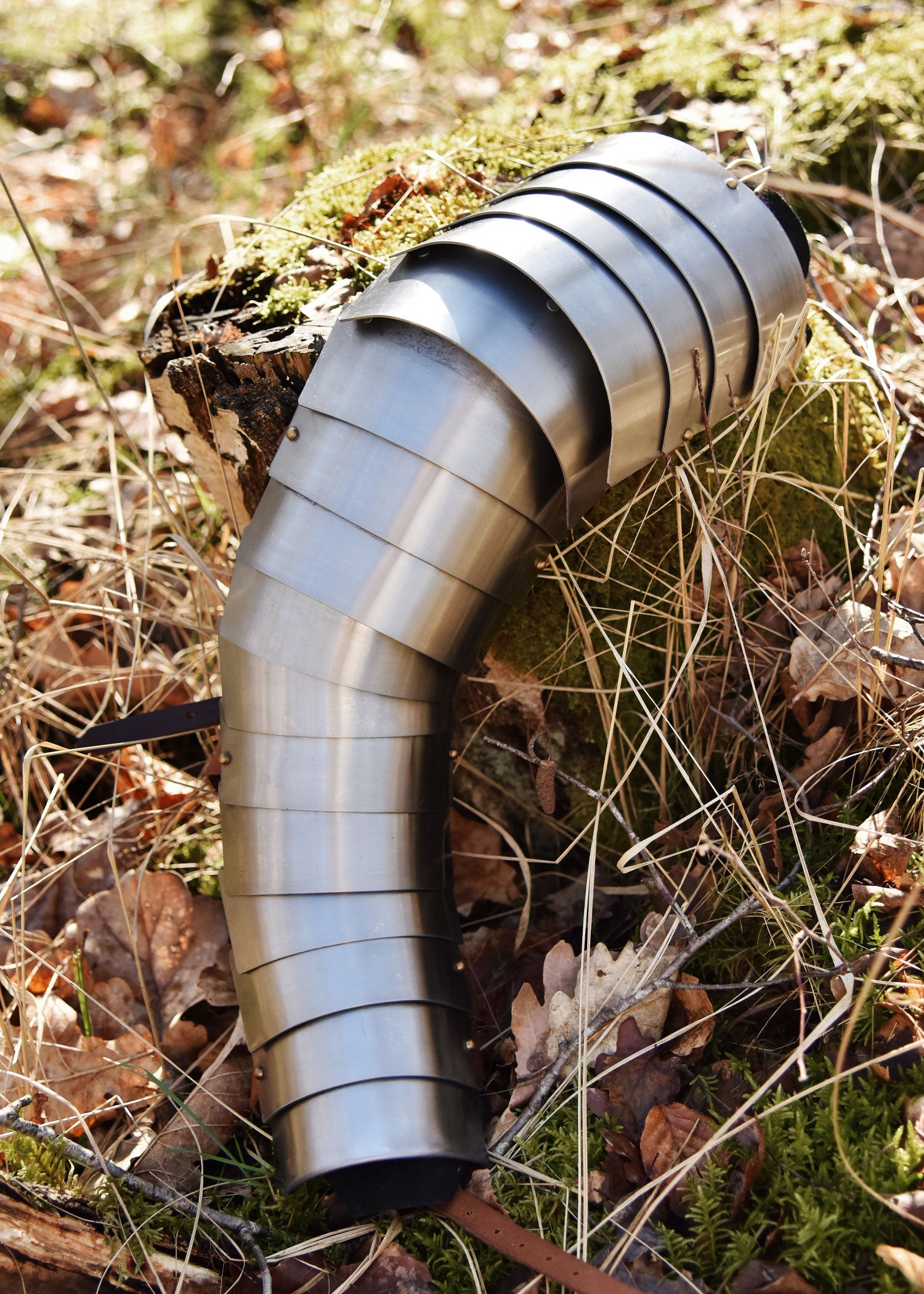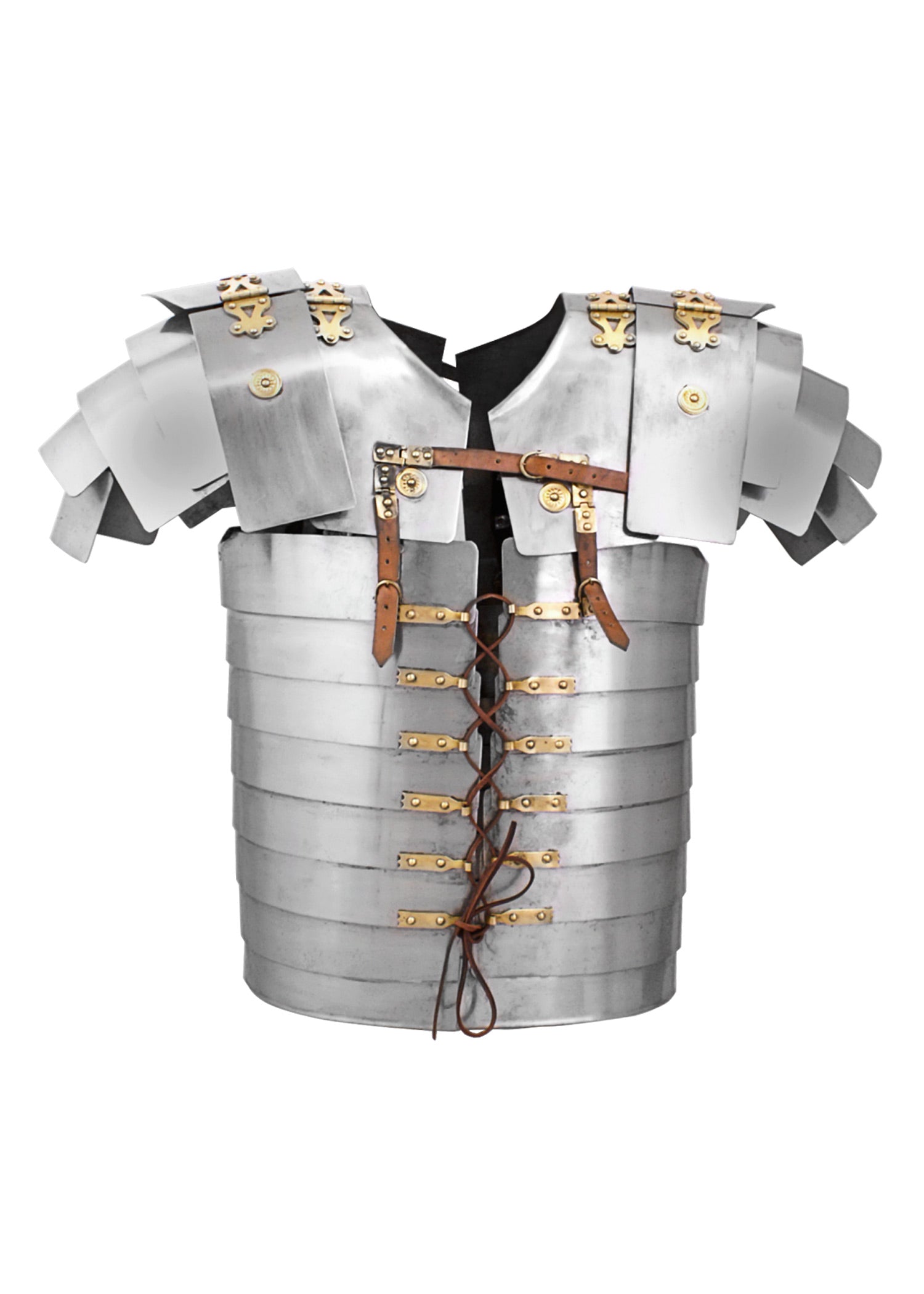Roman Armor: Protection and Legacy of the Legionaries
Roman armor was key to the military success of the Roman Empire. Designed to offer mobility and protection, it evolved over time to adapt to the needs of soldiers and gladiators. Below, we explain its main components:
Main types of Roman armor
- Lorica Segmentata: The most iconic legionary armor. Made of iron plates held together with rivets and leather straps, it offered great protection without sacrificing mobility.
- Lorica Hamata: A chainmail of interlocking metal rings, worn by legionaries and officers. More flexible than the segmentata, but heavier.
- Lorica Squamata: A suit of armor of overlapping metallic scales, common among officers and centurions, that combined strength and elegance.
Other key pieces in Roman armor
- Galea (Roman helmet): Essential for head protection. The best-known models are the Imperial Gallic and Imperial Italic , both with neck reinforcements and side cheek pieces.
- Manicae: Articulated arm protection, especially used by gladiators and some cavalry units.
- Greaves (Ocreae): Metal pieces that protected the legs, used mainly by centurions and high-ranking officers.
Roman armor was not only functional but also reflected status and hierarchy within the military. Whether for historical reenactment, collecting, or decoration , at Medieval Store you'll find high-quality replicas that will transport you back to the age of the great conquerors.

